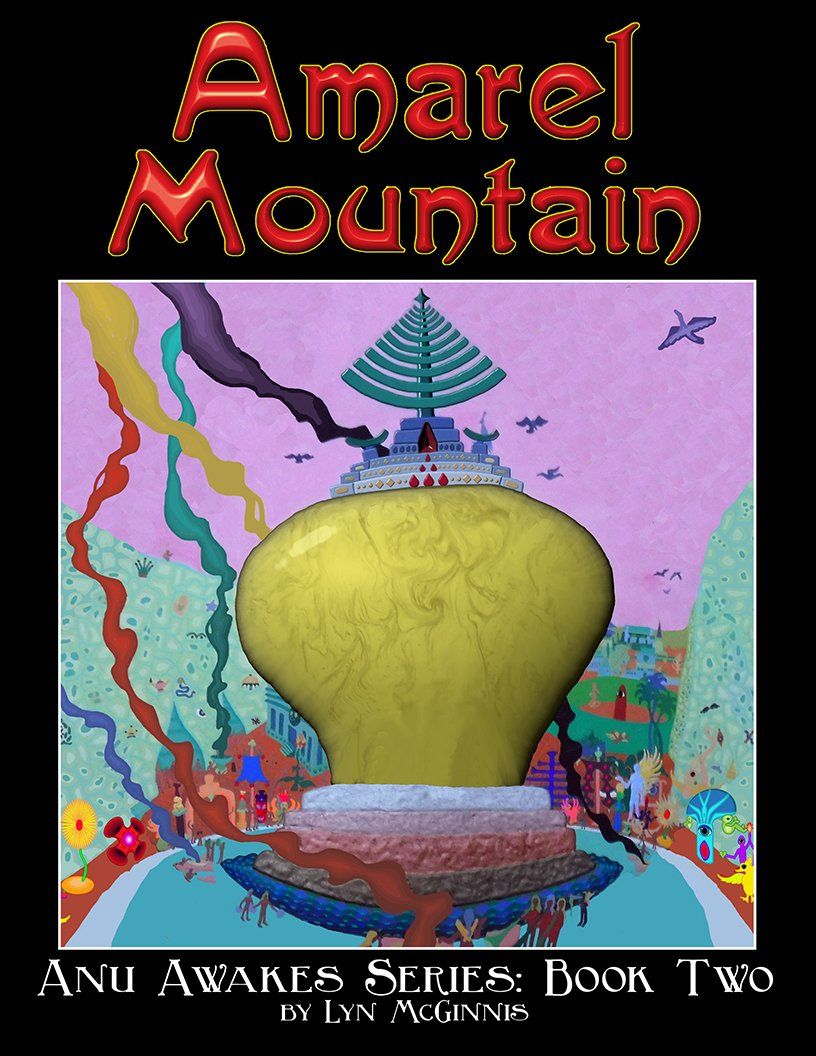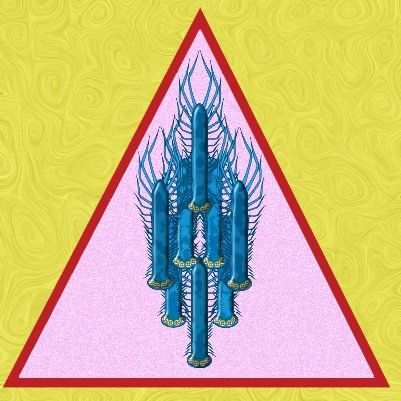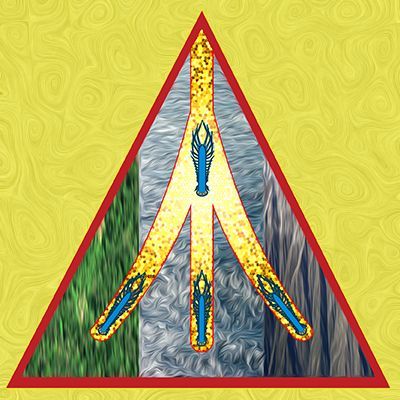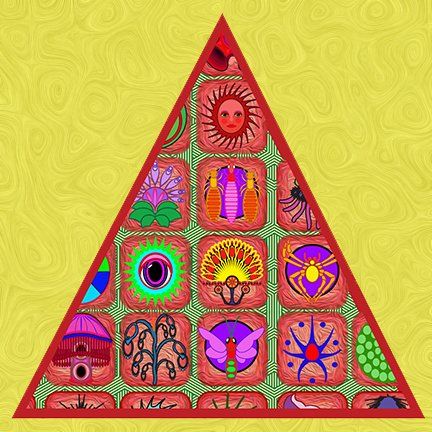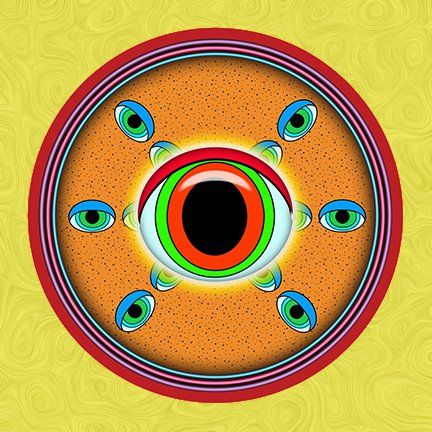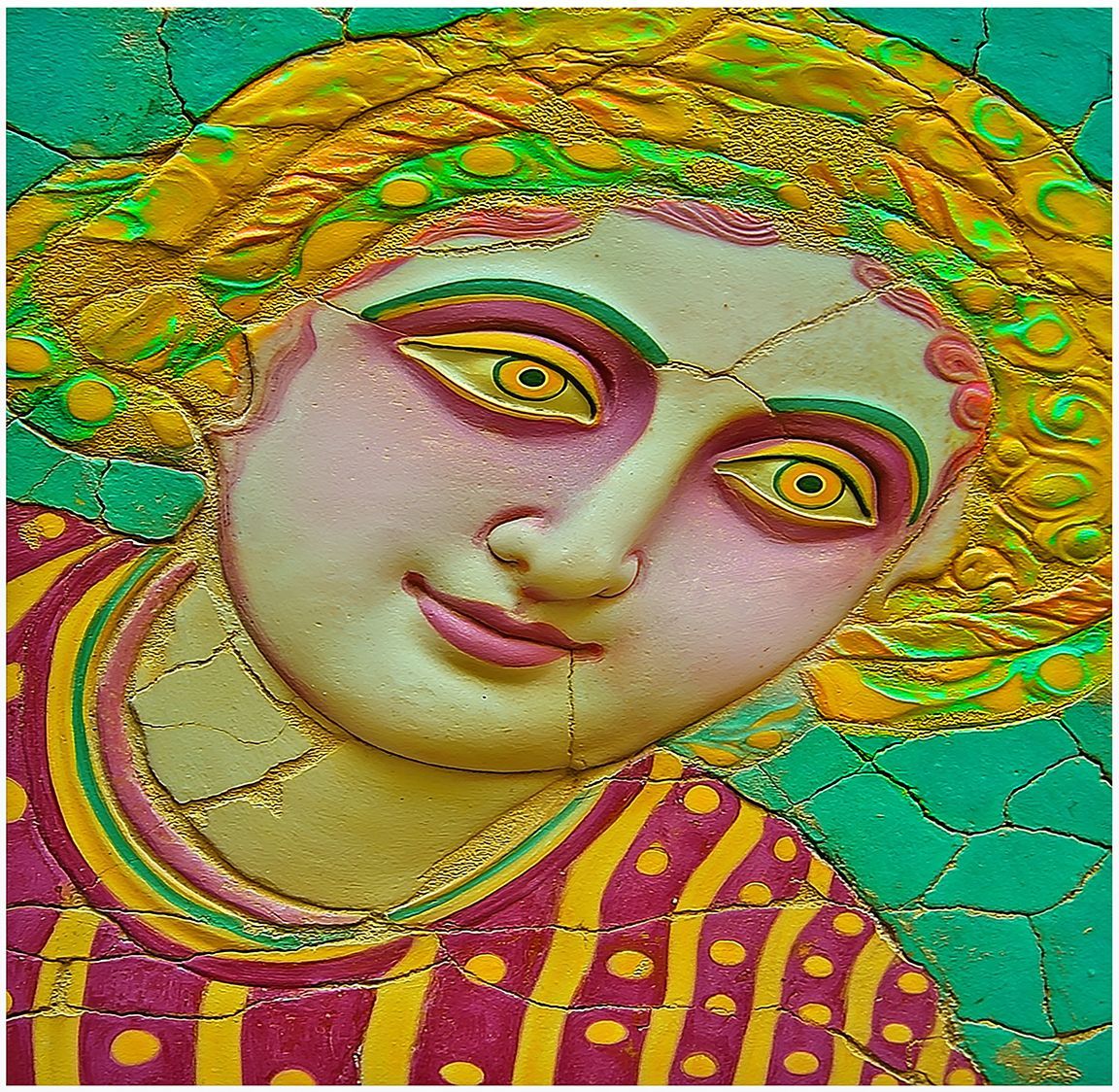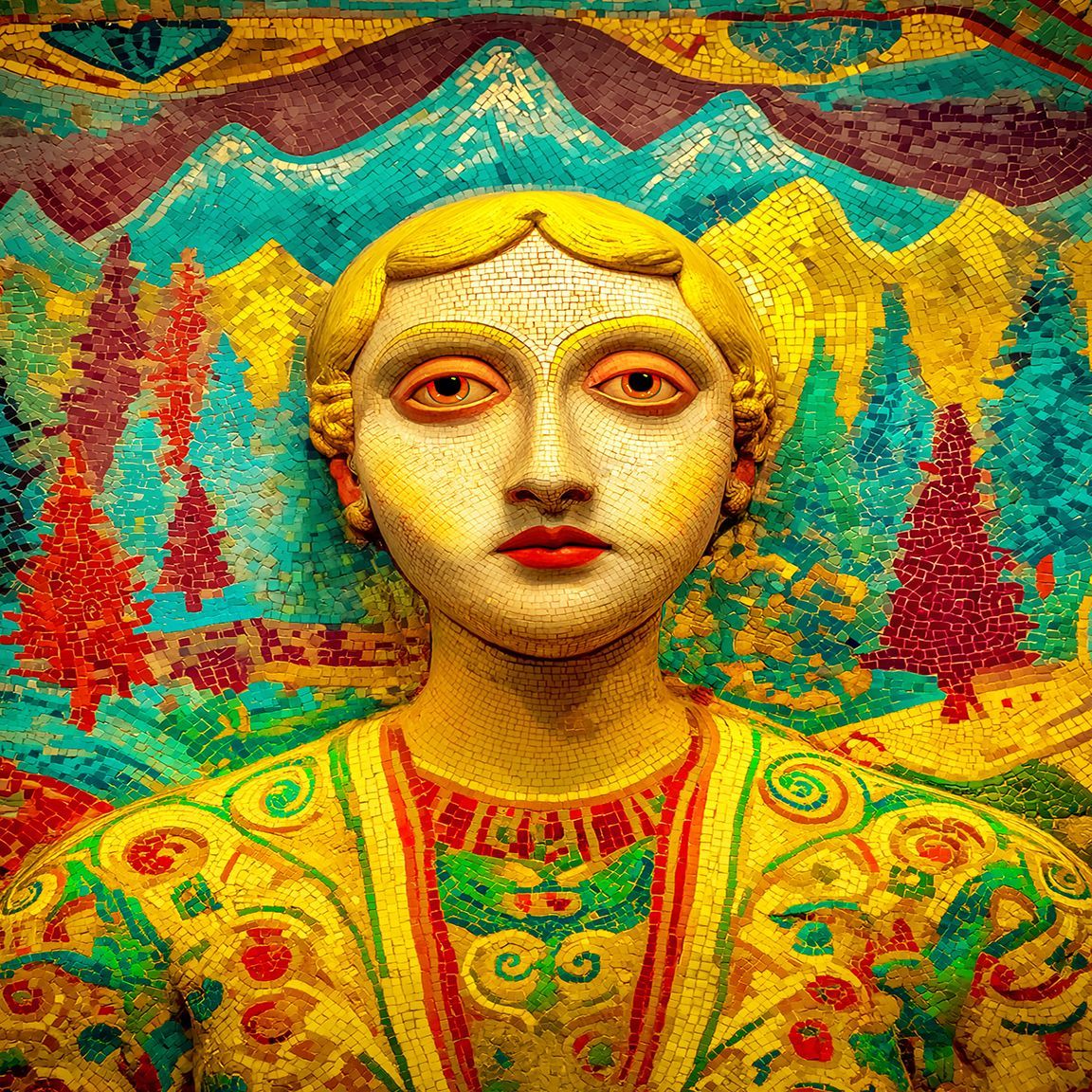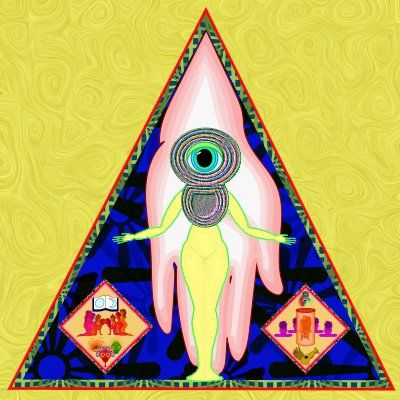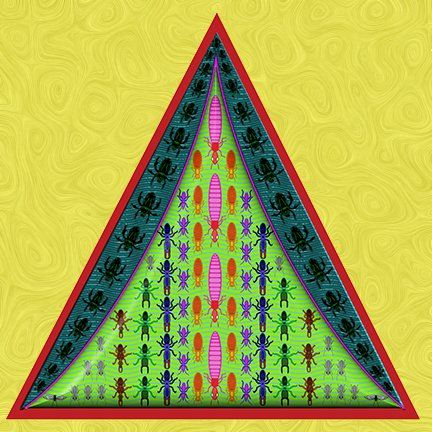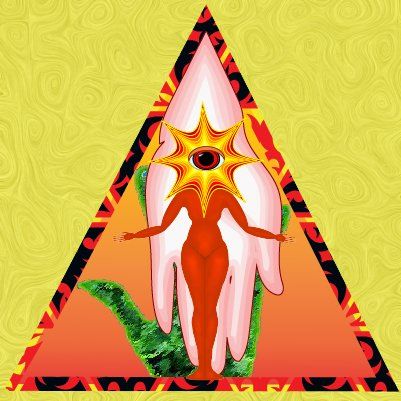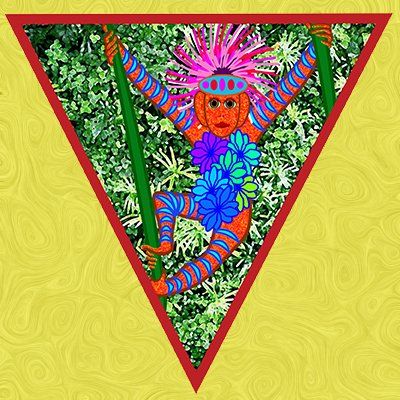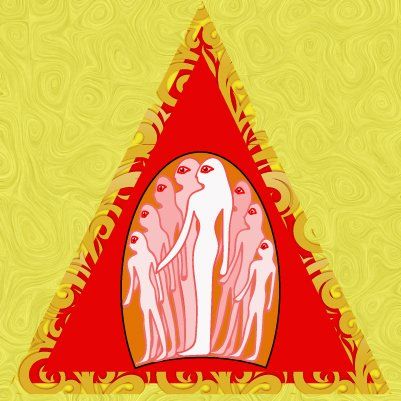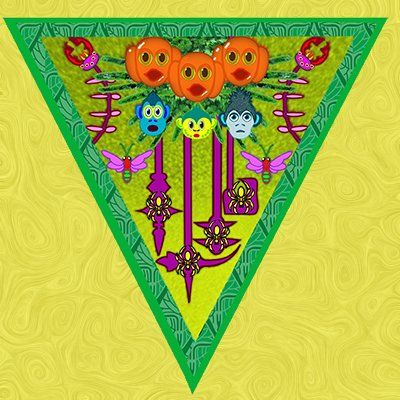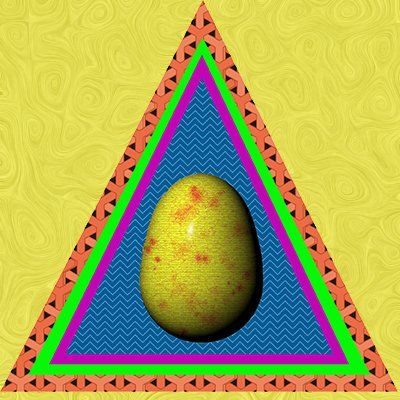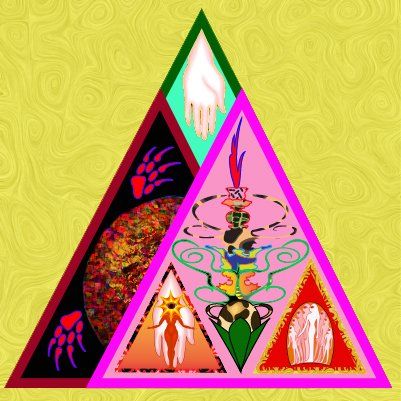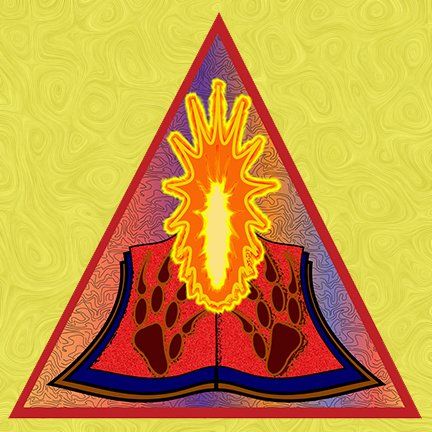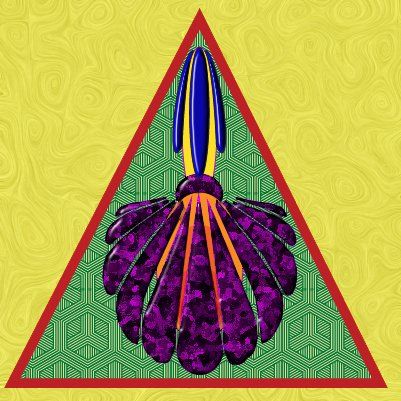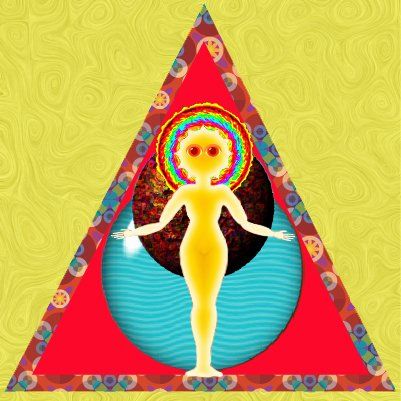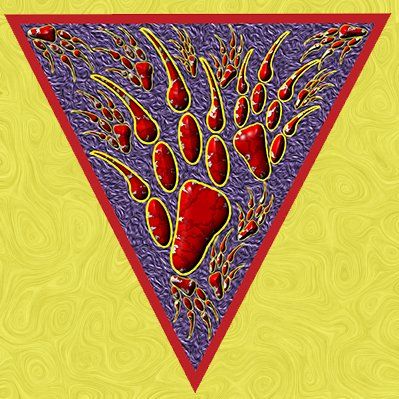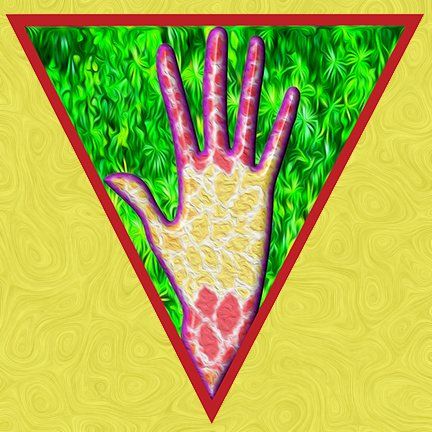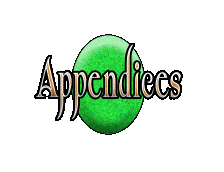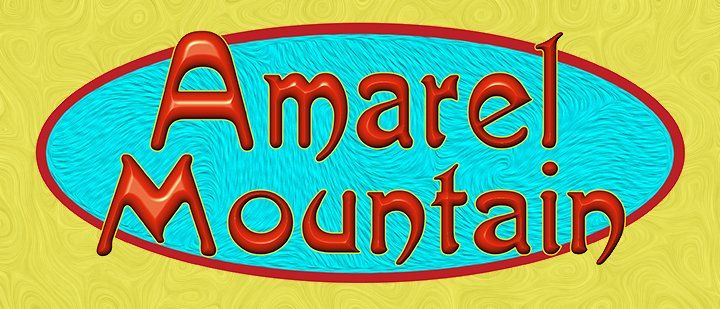
Welcome to the page set aside for the second in this sequence of novels devoted to the Tatchlan System and the Planet Anu. An immense period separates Amarel Mountain from the first novel of this Anu Awakes Series, Hesha Vira’s Challenge. Summaries will be given below of the Primary Epoch and The Interim, separating these two novels, along with profound changes to the populations of Anu during these extended and tumultuous periods. This material will contain links to more detailed information elsewhere on this site. A summary of the characters and themes specific to this novel will follow. While presuming an acquaintance with the first novel, it is hoped this tale also stands alone with the support of expository material introduced throughout the story and the background provided on this page. Four sets of characters and numerous secondary characters closely associated with them are profiled here. Each chapter is named for the principal character appearing in it.
Hesha Vira’s Challenge presented the birth of the Tatchlan System and the transformation of Anu. This second novel dives deep into most ancient and modern examples of Cluster-of-Cluster Nations reigned over by a succession of Majastas. It also allows the reader to take their first step into a cluster and begin to discover the intricacies of life within a Circle of Eight, including the introduction of some of the Spokes of the Cluster Wheel. All this will continue to be explored for the remainder of this series. While most characters are part of their Circle of Eight, only a few take on prominent roles in the action of this novel; hence, only some will be outlined on this page. They can conduct their inspired and brilliant lives in considerable measure due to having the love and support of their circle and the larger cluster surrounding them.
Novel Characters
First and Second Koru Majastas
Koru Majastas Zudaz I
Emergence, New Mecalan Colonies, Beginning of the Suvuka’s End, Troubling discoveries, Living Mountains commenced, Yelda and The Two Majastas Hands, Yakku disappointment, Majastas Zudaz I untimely end
Koru Majastas Zudaz II
Peaceful continuity, Reign and Legacy, Zudaz Dynasty
Koru: Zudaz-Shushum
Submissive Enumerator Maja Zudaz-Shushum, Complete Zudaz-Xoduth, Archeologist Vogum-Mul, Acclaimed Professor and Teaching Academic Xumb-Chulash, Suv-Unua (Koru mother of Hiten and Grivel)
Koru Yelda (Sumudin): Yuna-Monu
Sumudin and Yuna Cluster,
Yuna-Monu (Fresh Adult Male),
Yuna-Monu’s Moment of Disturbance,
Yuna-Monu’s Yelda and Yakku experience,
Yuna-Nobov (MAJA/Male),
Yuna-Nobov’s fear and frustration, Yuna-Mosum (Female LAPIS BETWEEN), Path to becoming an Esteemed Librarian,
Lifts herhis toes and drags herhis heels,
Lapis Between Yuna-Mosum and the Moment of Disturbance,
Yuna-Yuyuz (MAJA/Female),
Yuna-Honos (MAJA/Male),
Crate chronology error
Yakku: Foremost Moval Jovikel
Dramatic yearly years, Jovikel becomes heir, Yesosel and Suv-Unua, Fateful year, Demise of Newborns League, Fathers of four, Vivavem witness to history and family discord
Yakku of Rho-Jashun
Kekavil Nest of Kalasek Regional Tree
Viperfer: Mature pedigree, Surveyors General and Estate plantings, Daughter radicalizes mother,
Sensarab: The Telling, Lure of two Doubles, Sensarab following and leading
Field Yelda: Sama-Andam
Sama-Andam: Sudden Ripe Adult, Spice Driver Cluster, Precious Fraternity, Sama-Lavan, Sama-Vara Fragments form new cluster, Epic migration across the Marachla, Agricultural tools and rites, Double Sama-Vara
Background
Primary Epoch
One Hundred and Twenty Aeons, Domesticated Suvuka, Blossom becomes Burning, Killing Swath
The Interim
Dramatic interval between the Epochs, Guardians, Amassment and Treasuries, The Koru, Second Suvuka Onslaught on Rho-Jashun, The Tolku to Koru Change, Early Invocates and Operants, Healing Vats innovation
The Yakku
Mystery of remaining, Paramount Barrier, The Yakku version of The Change, Moment of Disturbance
Koru, Yakku and Yelda
The Happy Century, The Yakku Rift from the Koru, The Yakku's Swaying Wajah, Contention over Yelda, Yeldic Colloquium, Yakku response to Koru’s Yeldic Bulletins, Majastas Crisis
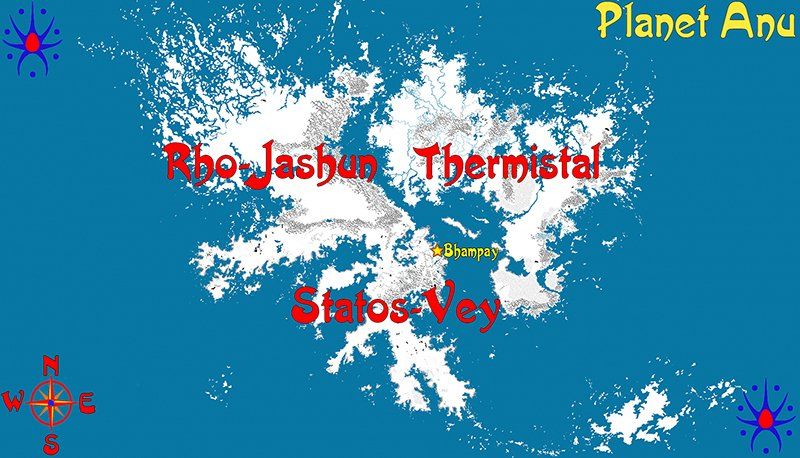
First and Second Koru Majastas
Majastas Zudaz I Emergence
In the year seven hundred and forty-one, the last year of The Interim, the Zudaz Cluster within Mount Chraxan of the Central Triumvirate reached a critical mass of Maja for The Mantle to envelope what would become the first Majastas of both the Secondary Epoch and the Koru. Zudaz-Vozev was a Ripe Adult of nine and twenty years at the time. This also begins what comes to be known as the Unbroken Koru Calendar (UKC).
The formation out of the cumulative body of Maja and the progress of Her finalizing the complete Quickening of Tatchlan was, as with most Majastas, what would come to be called the Primary Epoch. The most notable exception was the first Majastas of the Tolku, Thakadush-Satwa, as detailed in the first novel of this series, Hesha-Vira’s Challenge. In one way, Zudaz-Vozev and Thakadush-Satwa, the first Majastas of the Tolku, shared something in common. Due to the formative nature of Her Estate, The Throne possessed Her to a far greater extent at once to imbue Her with the wisdom and strength of will to forge the entire Cluster-of-Clusters Ministry structure out of what had been the Central Triumvirate within the first ten years of Her Reign. It must also be noted that when this new Majastas entered the Living System for the first time, four hundred and ninety-three Operants presented themselves to Her. While less than the six hundred Operants recorded generations earlier during the first wakening of the Faces, this considerable population of Operants represented a vast percentage of the Koru population (given Primary Epoch norms). This mighty company of Operants, along with many hundreds of thousands of Invocates, was the apogee of what the Central Triumvirate could offer Her in laying the foundation of the future.
New Mecalan Colonies
While vast Suvuka herds still roamed the surface of the Marachla Plain, Majastas Zudaz I initiated a multitude of Generational Plans deep within the Mulungu Mountains. The first to reach fruition was the recovery and improvement of the Mecalan insect colonies within Tatchlan. These beings had formed the foundation of the Tolku’s surface transit system throughout the Primary Epoch.
The Mecalan had degraded during The Interim due to Swath damage and subsequent lack of purpose. In Twenty-Eight UKC, it was proclaimed that a new version of Mecalan, now joining the ranks of ‘Recovered Ones,’ was perfected. This icon was minted at the time, showing both the modified version of the creatures and the new icon border of the Koru. This ‘mountain border’ shape evoked their home mountains, where all life thrives.
These revitalized Mecalan would fuel a vast new underground transit system that would come to be known as ‘Continental Lines.’ The Circulation Bureau of Her Preeminent Works Ministry conducted the surveys, followed by wondrous excavations at significant depths, to commence this first of many majestic enterprises. Due to the survival of technical materials and tools, much of the original craft for such specialized industry was utilized.
These prodigious mass transit corridors, containing compound public and freight tracks, would form branching and entwining spines of a new Cluster-of-Clusters Nation on Rho-Jashun and across The Skin of Anu. This icon illustrates this expansion with three lines radiating off a central one to travel over land, underwater, and through stone.
By the year Thirty-Five UKC, a vast network was proposed for all of Anu, even crossing under the Panchala Sea to Thermistal. Honoured Historians now see how another Generational Plan had led to the comparatively modest population of the Central Triumvirate’s three core mountains surging beyond all capacity, necessitating new settlements throughout the Mulungus. Majastas Zudaz I took this momentum to move the Koru north to repopulate the traditional centre of Tolku governance on Rho-Jashun.
Majastas Zudaz I declared:
“As the babe leaves the cot, so shall the Koru move beyond the sheltering confines of the Central Triumvirate. We shall begin to repossess the Thithanu Capital Region.”
None of this would have been possible without these fortified Mecalan Colonies.
Beginning of the Suvuka’s End
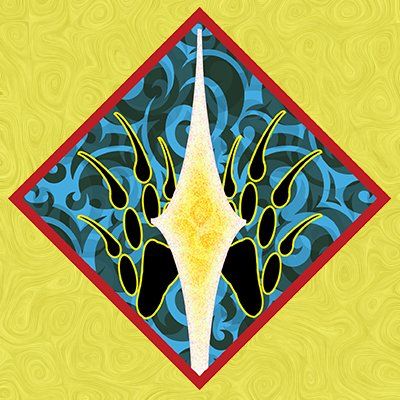
In the year Sixty-Four UKC, another Generational Plan was finally realized. While most were dedicated to formulating new life, this was committed to extinction. The most-ancient modifications to the Brangnam Plague, brought about by Master Duamang in the Lesser Era of the Primary Epoch, were once again brought into fullness by the new Majastas within Tatchlan.
The release of these agents, riding on their Blood Midge ‘chariots,’ would once again render entire brutish herds of Suvuka sterile. The Muraharoma Dynasty of the Primary Epoch chose not to terminate the Suvuka then but sequester them for potential purposes behind the Vettencore Passage. As with so much else, the Killing Swath brought the once mighty Suvuka Domestication Ministry and its noble aims to a close. A clean break from this legacy was enacted in the sixth decade of the Secondary Epoch. Majastas Zudaz I declared:
“Our history dictates we must expunge Anu of our former companion, ally and nemesis.”
This time, the plague was to be unleashed across Anu. By far, the largest concentration of herds was on the ‘boundless Marachla Plain’ west of the Mulungu Mountains on Rho-Jashun. Waves of blood midges carried their charges out of the mountains and across the plain. Herd movements were monitored for the next twenty years, as Master Duamang had done from Mount Anchaphron to the south of the Mulungu range. Fourteen years later, in the year Ninety-Eight UKC, over thirty years after the last confirmed birth of a Suvuka pup took place, Majastas Zudaz I took what would become the celebrated walk through Enimik Round under Nu’s ‘Baleful Eye’ at noon. This was the largest Suvuka ‘mesmerizing run’ site on the northern Marachla Plain. Her Commandant Ministry completed extensive sweeps and found no living Suvuka left. By now, the reduced herds had begun to disburse and move north. Ministry operants gathered all the Suvuka bones they found and were able to bury the tall Suvuka boulders at the centre of the round within a huge mound of ‘long-dry’ Suvuka bones. In this same year, the many thousands of Yakku, descendants of those who emigrated to Rho-Jashun from The Happy Century onward, began to migrate toward the Royran Valley. At the same time, the Engineering Bureau of the Commandant Ministry conducted small groups of Yakku out to predetermined locations across the Marachla Plain to begin planting what would become the Yakku Estates. Just over one century later, all Yakku were encouraged to move out onto the freed Marachla Plain and settle in the mature stands of Mernet trees in compact forests.
Troubling discoveries
Later, Venerable Scholars and Honoured Historians would note how Majastas Zudaz I, naming the Suvuka as ‘our former companion,’ appears to have excited little or no enquiry. This is now seen as clear evidence of two unknown facts. One was that She had located the series of eighty ‘Breathing Seals Conglomerations’ within the deep folds of the General Plain of the Living System. The ancient and powerful Majastas of the Primary Epoch established these living Sigils. They would have taught Her much unknown about the venerable past. They would have also introduced troubling questions afflicting the remainder of Her Reign. The other fact was that Majastas Zudaz I had enacted the Majastas Inhibition around several possible areas of enquiry stimulated by these many changes, including the now-forgotten existence of the entire Suvuka Domestication Ministry. Such truths would unseat many foundational narratives grown over The Interim. She struggled to fortify the Koru for these and other more perturbing revelations.
The Breathing Seals Conglomerations also divulged the most unsettling disclosure of all - the true nature of The Killing Swath itself. Unforeseen by even Her was that a Treasury crate would shortly be opened within the Kodrapum Grotto within one of the three Central Triumvirate mountains of Mount Arnom, revealing a volume detailing this long-standing arrangement. This story is told in this second novel of the Anu Awakes Series.
Living Mountains commenced
While much unfolded through careful design, sudden inspiration also played a profound role in the emergence of the Koru Cluster-of-Clusters Nation under its first Majastas. A notable example was the formulation of the Living Mountain. In the year Twenty-Eight UKC, a babe was born into the Majastas Cluster. Young Zudaz-Kupat became noted for several distinguishing intellectual features within his first eight years. Operants brought his presence within Tatchlan to the attention of the Majastas, and excitement grew as it became evident he would likely become the first Living Jewel of the Zudaz Majastas Cluster. Even in his raw state, he demonstrated an aptitude in his play to analyze structural problems and find innovative solutions. He also grew into a deep love for the Ketukku and was fascinated by their intricate mound structures. As a Fresh Adult within the Zudaz Majastas Cluster, he was put in charge of the care and maintenance of their nineteen Ketukku Mounds while embarking on an apprenticeship to become a Master Rock Crafter and Excavator.
Pictured here is the Koru icon for all Living Mountains. The central image is the upper and lower pyramid open on one side. Within is the Koru White Hand image, itself holding the Tatchlan Face of Alatanda, representing the Koru’s possession of the now revitalized Tatchlan System. The swirling Living Loam surrounds the Lower Pyramid. Just visible at the border are two other Living Mountains on either side. At the lower point of all three is the connecting Continental Line. The Upper Pyramid is surrounded by the Velvet Night, filled with the four moons and a collection of ‘fixed and roaming stars.’ It may be noted that all elements are in immediate proximity to each other, reflecting the ideal of ‘comforting closeness’ and eschewing any reference to the Upper Abyss.
Zudaz-Kupat's meticulous attention to minute details and fervent devotion to intricate, sequential procedures were regularly noted. None may now say when the concept of a Living Mountain first occurred to a still very young Master. However, the notion was well formed when he made his now well-studied Humility Petition to his august Majastas Sister in the year Fifty-Four UKC at six and twenty years of age.
All his documentation is now preserved in the Zudaz Mantle Museum in Kupat Queens One Living Mountain. These and subsequent written materials, drafting work and hundreds of models display a sweeping vision built on meticulous calculation and encyclopedic knowledge of diverse materials and techniques. Before the first spade went into the loam, these original Humility Petition plans ensured his official designation as the most cherished of all Living Jewels - a Genius in the first year of his Ripe Adulthood.
The treasured Living Jewel Genius badge he would have worn for the rest of his life is pictured here. A medallion of precious materials would have joined other honourifics, emblems, crests, and insignia surrounding the main gateway into the Majastas Cluster for as long as he lived.
As said elsewhere, these marvellous developments occurred while the Koru were still sheltered from the Suvuka within the Mulungu Mountains. Despite the perfection of the sterilizing agent for the Suvuka still being ten years into the future, in close association with his Majastas Sister, Master Zudaz-Kupat, along with a growing company of other Geniuses and Masters, finalized all aspects of not only the first Living Mountain but laid out the disposition of both pyramids and infrastructure of what would in the distant future become the Kupataron Living Mountain Cluster of District One. The Mulungu Continental Line had been under construction for nineteen years. Initially, the line was envisioned to service communities limited to the Mulungu Mountain Chain. Now, a portion of this completed line was reworked to become the first terminal for what would be named Kupat Queens One, in honour of this first supreme Genius of the Secondary Epoch and his abiding love for this ‘Venerable Insect Society.’ It is also well appreciated how the Ketukku, as the ’exemplar of a perfect nation,’ had provided efficient design aspects to this first generation of Living Mountains.
Genius Zudaz-Kupat was eighty years of age in One Hundred and Eight UKC when excavations finally began on Kupat Queens One Living Mountain. The inverted lower pyramid was to be built first, with the upper pyramid rising above the Skin of Anu. At the same time, Majastas Zudaz I instructed the Ratio Bureau of Her Wellbeing Ministry to orchestrate a sequence of incremental population surges in subsequent generations to eventually occupy the first of what would become a series of these vast new marvels. The lowest level of this lower pyramid was connected to the terminals for the two Continental Lines, the ‘Mulungu’ and the ‘Thermistal’ (which would pass under the Panchala Sea to connect Rho-Jashun to future settlements of Koru on Thermistal). Due to a multitude of challenges and the range of unprecedented innovations, this first Living Mountain was not completed until the Year Two Hundred and Fifty-Two UKC, one hundred and thirty-six years after the death of its namesake, in One Hundred and Sixteen UKC, and thirty-four years before the untimely demise of Majastas Zudaz I. Kupat Queens One Living Mountain had been fully occupied for thirty-four years when our Yuna circle tours it in Chapter Twelve of this novel.
Yelda and The Two Majastas Hands
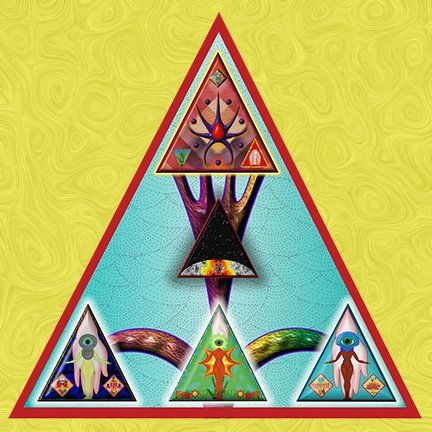
Early in The Interim, the Central Triumvirate was inspired to see the potential of the surprise issue of ‘The Happy Century,’ when the Yakku and Koru's discovery of each other caused the birth of a new hybrid, the Yelda. This led to the formation of the Yeldic Colloquium within Mount Chraxan, one of the original three mountain Sanctuaries.
Majastas Zudaz I took up this cumulative endeavour, which had already produced the loyal Sumudin and Kudurapala Yelda. She focused on the third class, known then as the Field Yelda. In the year Ninety-Eight, UKC, Majastas Zudaz I conducts Her ‘Enimik Round Walk,’ demonstrating the success of the most-ancient Master Duamang’s weapon in defeating the Suvuka through the drying of their wombs. Preparations commence looking to the future with the Field Yelda.
In the year One Hundred UKC, the first autonomous clusters of Field Yelda were planted within the enclosed Royran Valley within the Mulungu chain in central Rho-Jashun to begin their existence. A permanent garrison is stationed between Mounts Phorie and Mengung to ensure no stray Suvuka locate them.
One century later, when all traces of Suvuka are gone from Rho-Jashun and Statos-Vey, the first waves of Field Yelda are sent out in an orderly fashion from the Royran Valley onto the broad Marachla Plain. Most were settled by now mature forests composed of Yakku Estates established a century earlier. Groups of Sumudin were tasked with maintaining ongoing relations with these Field Yelda. The Sumudin become regular visitors as they bring resources and expertise while they study and report on their growth and development.
For all Her many accomplishments, the initiation by Majastas Zudaz I of the first of a long series of Epochal Generational Plans to bring about the ultimate goal of ‘The Two Majastas Hands’ had the most profound impact on the remainder of the Secondary Epoch.
Yakku disappointment
There are many memorials, literary works, and theatrical and musical productions on the storied life of Majastas Zudaz I. Her Majastas Annotations have been the subject of numerous publications and analyses through subsequent generations. The year One Hundred and Fifty UKC sees many references to Her dealings with the Yakku Collective of Thermistal. In that year, solemn pacts were signed between representatives of the Yakku Primary Movals of the Twenty-Three Regional Trees of Western Thermistal and the Koru Cluster-of-Clusters Nation in the Yakku tree city of Gye Sonin, capital of Bithen Regional Tree. For centuries, exchanges of resources and expertise had flowed south and north, along with significant populations from each nation settling on the other continent. This traffic culminated in One Hundred and Fifty, the seven-hundredth anniversary of a historic friendship between the ancient Yakku and the Koru of the Central Triumvirate early in The Interim period. This act was an official invitation to those Koru wishing to settle in the Viracocha Mountains to join their Yelda living within the Yakku Collective.
Notwithstanding this Majastas Progress to this Collective, a mere fifty years later, Two Hundred UKC, nearly all references to the Yakku ceased in all forms of Majastas Documentation. Going forward for the remainder of Majastas Zudaz I Dominion, She makes little mention of the Yakku.
On Day One, Foremost Day, of the first two-week, Atra, the Flame of the year Two Hundred UKC, Majastas Zudaz I publicly ensured Master Duamang’s weapon reached all Thermistal. The Brangnam Plague had travelled across the Panchala Sea from the southern lands, where it had seen to the end of the herds there. Nevertheless, it was weakened and did not entirely affect the massive Suvuka herds surrounding the Grand Lake Teval in central Thermistal. Now, Majastas Zudaz I travelled into the Viracocha Mountains of western Thermistal and released the Suvuka’s doom. Along with opening the door for the Field Yelda to fulfil their destiny in the south, She had hoped this would also reopen the door between the Koru and Yakku.
The so-called ‘Happy Century’ had taken place over five hundred years before the Mantle embraced the feet of Zudaz-Vozev. As detailed below, there had been a gradual decline in relations between these two descendants of the Tolku after The Killing Swath for many reasons, primarily related to their disparate views of Tatchlan. The complexity and discordant variations of the Yakku response to many aspects of the Koru Cluster-of-Clusters Nation proved increasingly challenging for the Koru to comprehend. Their objections to the Koru cultivation of their Yelda into Sumudin, Kudurapala and Field Yelda only increased with time. It is known that the Majastas had expended much consideration and effort to address these concerns and reach an accord with the Yakku, leading to the Her Progress to Gye Sonin. While the initial jubilant response in the Crown Rises to this news of the Suvuka’s impending demise met Her expectations, the subsequent groundswell of seemingly irrational fear dismayed Her. The movement to punish the Suvuka, despite their already being consigned to extinction and the appalling and despicable war that followed, led to Her becoming assiduous in her muteness to all subsequent developments within the Yakku Collective.
Majastas Zudaz I untimely end
Beneath Her many triumphs within Her
Cluster-of-Clusters Nation,
Majastas Zudaz I was unsettled by certain revelations She had based on delving into the living sigils of the ‘Breathing Seals Conglomerations.’ These Living Tomes are located deep in the folds of
The General Plain and had been discovered by the
Koru’s enormous population of
Operants during
The Interim. She was able to read them as these generations of Operants could not. She found many shocking truths set aside, some by thousand-year-old Elder
Majastas of the
Primary Epoch, that Majastas Zudaz I deemed Her fledgling Cluster-of-Clusters Nation were not ready to hear. Despite, out of necessity, being seated on
The Throne at a young age,
Honoured Historians now suggest She was still too young for this burden of knowledge. The true nature of what had come to be known as ‘The Killing Swath,’ including the deliberate burial of the
Sister City of Bhampay and the revelation of the Tolku’s ‘Suvuka Domestication Ministry,’ are but two that are revealed in the course of this novel. While she oversaw the excavation of the
Bhampay site during the entirety of Her Reign, the chance discovery of what would become known as the ‘Final Tolku Proclamation’ and another work detailing the Suvuka Ministry’s history, found in a single Treasury Crate of
Kodrapum Grotto within
Mount Arnom, came in quick succession shortly after Her untimely death. Her
Majastas Annotations make no mention of these concerns and give no hint as to how, if ever, She planned to make known these Breathing Seals Conglomeration disclosures. Despite the passage of ages, many questions remain about the nature of Her last night and how She died within the
Tatchlan System.
Majastas Zudaz II: Peaceful Continuity
Esteemed Librarians,
Venerable Scholars, and
Honoured Historians agree on many instances where
The Throne and
Mantle alternate between selecting a dynamic
Majastas to be followed by one dedicated to peaceful continuity. So, it was the second Majastas of the Zudaz Dynasty. He is remembered for ensuring all the presidents and innovations of
Majastas Zudaz I were maintained with absolute fidelity. There are only two exceptions to this rule. First was His termination of all previous
Majastas Inhibitions around the many surprising revelations of the first three centuries of the
Secondary Epoch. The second was His dramatic endorsement and support of the
Rho-Jashun Yakku’s embracing the
Tatchlan Legacy within themselves. What began with the gift of a single specialized
Healing Vat Egg to the first Yakku
Double spread over subsequent centuries to the
Spokes of the Cluster Wheel rekindled across all Yakku Estates of the
Marachla Plain of
Rho-Jashun.
Reign and Legacy
The Mantle enveloped Majastas Zudaz II at ‘seven and twenty’ years of age and would Reign from 286 to 837 UKC, a span of Five Hundred and Fifty-One years. This was more in keeping with the lifespan expectations for Majastas. While leaving the Yakku of Thermistal to their ruin, He would nurture the Yakku of Rho-Jashun into a new life under the Majastas Hand, gently laying the foundations for their gradual integration into the larger Cluster-of-Clusters Nation. He would also see the completion of the following four of the Kupat Living Mountain Series: Kupat Drones One, Nurses One, Soldiers One, and Builders One. Eight hundred and fourteen years after His death, the Kupat Drones One Event occurred.
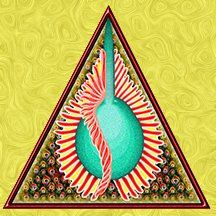
Zudaz Dynasty
The Zudaz Dynasty would contain eleven Majastas following in succession, including three Majastas Betweens and one Majastas Complete. Those coming after Majastas Zudaz I would possess Dominion for an average of Five Hundred and Seventy-Nine years and oversee the Koru Cluster-of-Clusters Nation until 6,077 UKC. The Dynasty would raise twenty-one Living Mountains of the Kupat series, following the dimensions and layout set down by the founding Genius Zudaz-Kupat with steadfast precision. Only the first twelve of the Kupat series were contained in what would later be known as the Kupataron Interlaced Dependency. The remainder continued south and east along the flanks of the Mulungu Mountain range into what would, in later ages, become Districts Two and Three.
While subsequent dynasties would choose larger and, in other ways, modified versions of Living Mountains for new series, the original number and configuration of Genius Zudaz-Kupat were loyally adhered to in the completion of District One, the Kupataron Interlaced Dependency.
Pictured here is the official icon for the entire Dynasty. It was formulated during the reign of Majastas Zudaz IV and referenced a distinctive refinement to living minutiae within the Living System.
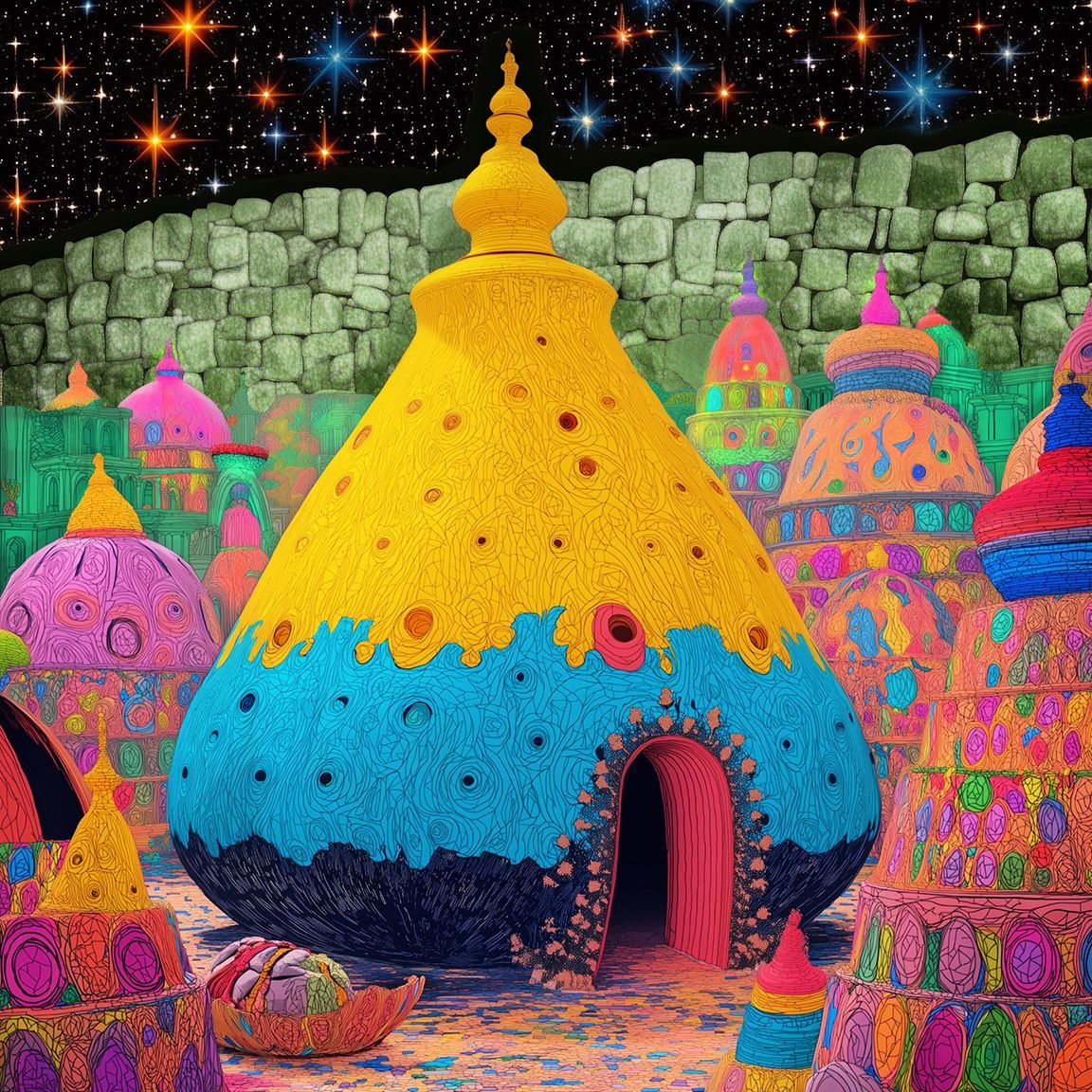
This is a modern rendering inside the completely excavated Amarel Mountain site. This grouping would be seen just inside the Western Entrance.
Koru: Zudaz-Shushum
Submissive Enumerator Maja Zudaz-Shushum
A member of the Zudaz Majastas Cluster, sixty-seven-year-old Zudaz-Shushum is the head of her Circle of Eight, representing one of the deepest ranking levels of the Enumerator Ministry. She has dwelt within the first Living Mountain of the Kupat Series for nearly half her life. She is part of the Majastas Cluster of Zudaz the First and now Zudaz the Second and lives much of her life within the monumental statue of the first Koru Majastas. Her Circle of Eight is ranked twenty-fourth within the Majastas Cluster and is the Prime Ring of the Erudite Bureau (the Primary Epoch icon shown here was one of many used by their most-ancient Tolku counterparts). All Ripe Adults of a Majastas Cluster are Maja. As with the most profound rings of all Ministries, her Circle is distinguished for being entirely composed of Invocates. This is essential for service within the Dallamaplan to make the necessary contacts with distant agents anywhere on Anu and, on infrequent occasions, their Majastas.
For the last forty-two years, Zudaz-Shushum has served within this prestigious bureau of the Enumerator Ministry. Until the unusual dispatch from her Majastas Zudaz-Vozev, the Prime Erudite Ring’s service occurred within the Living Mountain and the surrounding Mulungu Mountains of central Rho-Jashun.
Before she arrived at the Bhampay location, apart from visiting the original Sanctuary grottos and numerous Treasuries, Submissive Enumerator Maja Zudaz-Shushum had no prior experience with Primary Epoch sites. Despite this lack of background and training in archeology, her Majastas, Zudaz I, deemed her and her Circle the primary contact with the isolated clusters working for generations on the distant Bhampay site on Statos-Vey. Submissive Enumerator Maja Zudaz-Shushum was declared ‘Field Head,’ representing her Ministry and Cluster-of-Cluster’s Nation of this previously secret project. It may be speculated that her deep education and decades of experience, particularly in focus, fortified her for the mysteries she encountered at Amarel Mountain. She was also surprised at the findings at the Bhampay site and her unforeseen friendship with the chief archeological liaison for the extensive workforce, Mul of Vogum Cluster.
The above image is the only verified depiction of Submissive Enumerator Maja Zudaz-Shushum. Her likeness is part of a large composition found deep in the lower pyramid of the
Kupat Queens Living Mountain and is meant to show her participating in a ceremony celebrating the opening of this first Living Mountain. She would have been thirty-three at the time. This composition has undergone some restoration after numerous Anu Quakes from that time to this.
Complete Zudaz-Xoduth

It must be said that prior to arriving at the Bhampay site, the fifty-one-year-old Complete Zudaz-Xoduth had led a privileged and contented life. As with herhis cluster mate, Submissive Enumerator Maja Zudaz-Shushum, Xoduth wanted for nothing within their Majastas Cluster. Shehe had given birth to one daughter, now a Ripe Adult, and likely sired several other children within herhis circle. Along with fulfilling this and different roles as a Complete within herhis circle and cluster, by herhis assiduous application of passionate intellect, shehe had achieved a measure of academic and professional distinction beyond herhis preeminent cluster.
Complete Zudaz-Xoduth was also a contrast to Shushum in herhis more emotional temperament and opinionated disposition. This is particularly apparent in herhis outspoken views on the contents of
The Treasuries. While of equal depth to herhis cluster-mate, shehe is more reticent to let go of habitual thinking and more inclined to complain about inconvenience and discomfort.
This general position is softened by herhis growing respect, followed by admiration and affection, for their archaeologist contact on the site, Vogum-Mul. This leads to a deeper understanding of the enormity of Bhampay’s many revelations. Herhis growing appreciation for the significance of the discovery of the Dream Guides around Amarel Mountain may be said to bring a measure of peace to herhis previous disquiet about many unanswered questions encountered with herhis work over the last three decades.
Pictured above is an honourific library ornament of Complete Zudaz-Xoduth. This type of structure is reserved for distinguished Venerable Scholars and authors who have made a notable contribution to their literary field, one that endures long after their death. In the case of Complete Zudaz-Xoduth, shehe went on after the events of this novel to not only master all of the Treasury material concerning the Dream Guides, whose monuments surrounded the newly discovered Amarel Mountain, but to author a large body of original work expanding and deepening the understanding of the facets and application of these Guides.
Archeologist Vogum-Mul

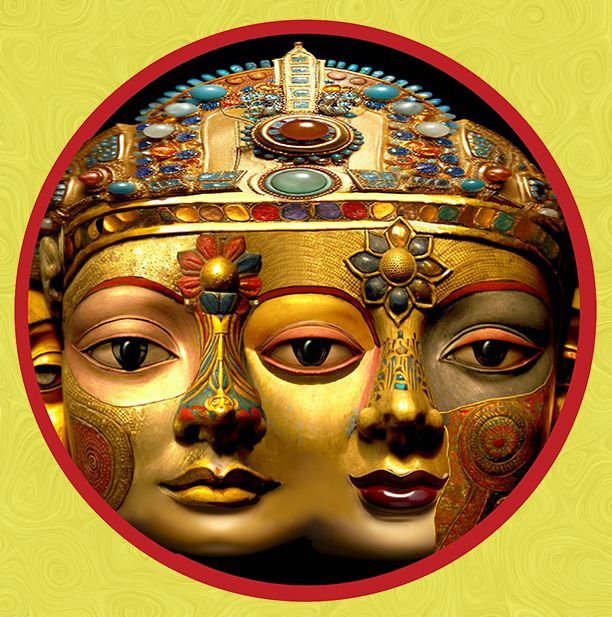
Pictured: Renderings of two of the more famous double faces within Amarel Mountain.
Mul is a study of dedication and patience. Several generations of her and other Koru clusters had laboured in this remote setting. Amarel Mountain was discovered in Two Hundred and Sixty-One UKC, twenty-five years before our story begins. Vogum-Mul, who played as a child among the hills before becoming fully trained in her cluster’s uses, was thirty-eight years of age at the time of the monument’s initial uncovering.
With discipline and forbearance, her circle and clusters followed the directives of their Majastas in proceeding with extreme caution and thoroughness in their work. With the arrival of the Prime Erudite Ring of the Enumerator Ministry and the revelation of their near-total innocence of the successive revelations of the Bhampay site, Vogum-Mul found herself taking on new roles as an interpreter and oversaw an accelerated program to reveal all aspects of Amarel Mountain in full. She also developed a comradeship with someone she never dreamt of meeting and working with, the Submissive Enumerator and Field Head representative of the Majastas Cluster, Zudaz-Shushum and Everlastingly Serving Complete Zudaz-Xoduth.
These three disparate personalities share one characteristic. Due to the challenging depths of their various professions, they unknowingly suffered under the Inhibition laid on the entire population by Majastas Zudaz I. With Her death, many questions began to take wing in their minds. Despite differing in many ways, these disturbed musings were brought to something of a crescendo at Amarel Mountain.
Acclaimed Professor and Teaching Academic Xumb-Chulash
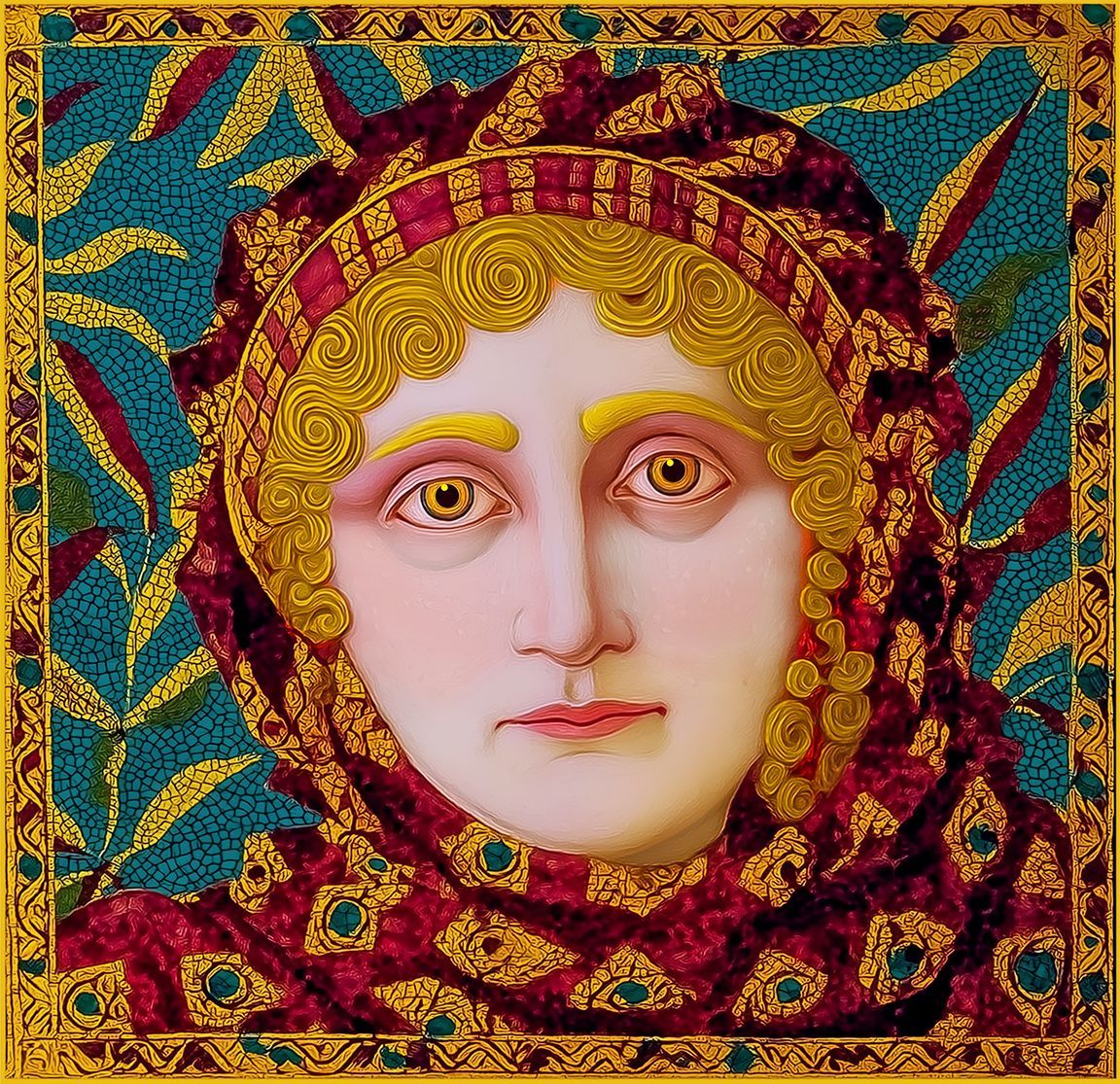
While not a member of the Majastas Cluster, fifty-nine-year-old Xumb-Chulash joins Submissive Enumerator Maja Zudaz-Shushum and Complete Zudaz-Xoduth in representing another aspect of the Erudite Bureau of the Enumerator Ministry. In her case, this takes the form of lecturing students aspiring to several academic professions, including Honoured Historians and Esteemed Librarians. Her curriculum covers late Tolku and early Koru history, emphasizing the Central Triumvirate of The Interim.
Given that the thirty-two known Treasuries were discovered during this Interim period, she has studied the works emerging from this mysterious collection, even though they largely predate her pedagogical focus. As with most of her colleagues, including Complete Zudaz-Xoduth, these efforts have led to frustration with their mystifying content. This contributes to her diminished respect for the ongoing Treasury work, including the Yuna Cluster’s generational efforts in the Parayad Treasury within the Kodrapum Grotto of Mount Arnom. In assuming this largely unconscious attitude, she is following the intellectual trends of her time.
This informal and largely unspoken school of thought contributes to another notion that the latter Aeons of the Primary Epoch witnessed a gradual slide into mysticism. Her distaste for Auras presence in the Final Tolku Proclamation is evidence of this point of view. Notwithstanding her area of expertise, she unknowingly remains subject to the Majastas Inhibition concerning all enquiry into The Killing Swath, arguably the single defining feature of her study area.
While outside her area of focus, like her colleagues, she mourns the incalculable loss of the Mount Midin Amassment. Comfortably maintaining what may be later judged to be unfortunate attitudes, Acclaimed Professor and Teaching Academic Xumb-Chulash is also keenly aware of the many gaps in her knowledge of both The Interim and the Primary Epoch. When long-held presumptions are challenged, she admirably adapts to uncomfortable revelations, even when they overturn personal beliefs.
Pictured is one of an extensive series of Koru icons representing libraries. The diversity of elements besides books may be noted in this image that such institutions are linked to all forms of cultural expression and may be found in general reference and highly specialized collections within every Mantle Establishment.

While this image was fashioned some thirty years after these events and seen from a higher vantage point, it is a portion of the view from the Xumb Cluster in the lower pyramid of Kupat Queens One Living Mountain. This is a scene in which a partially visible Circle of Eight (left) waits for the arrival of a key personage in another tale. Note the bioluminescent vines on the walls, which serve as a primary source of ambient illumination.
Suv-Unua
(Koru, mother of Hiten and Grivel)
The Suv Cluster did not exist when the first Koru settlement began within the Viracocha Mountains of western Thermistal in the year 191 of The Interim. This was just over ten years after initial contact between the Yakku and Koru. Their antecedents, composed of several founding clusters, shed cluster fragments over the subsequent centuries, leading to the formation of the Suv Cluster in the year 332 of The Interim.
Over the remaining four hundred and nine years of The Interim, the Suv Cluster gradually increased in stature. This was primarily due to their location, which linked the mountain-dwelling Koru across the Panchala Sea with the surrounding forest-dwelling Yakku. This advantage grew after the completion of the Thermistal Continental Line. The cluster was on the eve of celebrating its Forty-First Decade when the Mantle manifested on Rho-Jashun within the august personage of Majastas Zudaz-Vozev. It may be said that while the subsequent two-and-a-half centuries brought much joy and prosperity to the Suv Cluster, it also laid the seeds for its eventual fragmentation after the events of this novel.
Suv-Unua was born in the year 238 UKC of the Secondary Epoch. This was one hundred and three years after the Thermistal Continental Line had linked the Koru of Thermistal to those on Rho-Jashun (135 UKC) and eighty-eight years after Majastas Zudaz I made Her Progress to Thermistal (150). She was also born thirty-eight years after the Majastas returned to release the Brangnam Plague on Thermistal (200). She was the second generation to live with the reality of the Suvuka finally being undone. She was also steeped in the Koru culture of the Viracocha Mountains and the Yakku Collective of the surrounding forests. However, being part of a circle of eight containing a Maja within a larger cluster, she was rooted in the Cluster-of-Clusters Nation of Rho-Jashun and the first Majastas of the Secondary Epoch. From the inception of this Koru colony on Thermistal, the Koru and Yakku produced Yelda together. Suv-Unua found joy in one handsome lad by the name of Yesosel. This Yakku youth was fast friends with Jovikel, the second son of the Foremost Moval Velparun of the Girasem Nest of the Bithen Regional Tree, within the Central Yakku Collective. Hiten was born in 272 and Grivel in 274 UKC. During ‘The Happy Century,’ a custom had developed where these children would have spent half their time with their Yakku father, Yesosel, among the trees and half with their Koru Mother, Suv-Unua, within the mountains. This was known as the ‘Half Year Rite.’ Due to the incremental building of tensions over many issues, the Yelda of Thermistal was increasingly limited to either one realm or the other. It was decided that the two girls would live with their Yakku father while continuing to visit their Koru mother. Foremost Moval Velparun had reinstituted the Yeldic Newborns League to provide camaraderie and support for Yakku parents of Yeldic children throughout Bithen Regional Tree, and Yesosel became a leading member of this revived institution in Gye Sonin.
Suv-Unna was but six years of age at the start of the Suvuka war in 244 UKC. Yesosel was ten. While these events immediately impacted neither, both grew up with the calamitous aftermath for both their societies. In 271, when Suv-Unna was thirty-three, and Yesosel was thirty-seven, they met at a Gifting in her cluster. The following year, she gave birth to Hiten and two years later to Grivel. Both girls, products of a Koru and Yakku coupling, were Yelda. Two years after Grivel’s birth, their father, Yesosel, died in the Newborns League fire of 276 UKC in Gye Sonin; he was forty-two. Yesosel's childhood friend, Jovikel, had followed the custom of standing as Guardian to Yesosel’s two girls should anything happen to him and now found himself taking on their care. Upon his father's death earlier that year, Jovikel assumed the Foremost Moval title. These events would change and intensify the relationship between the then thirty-eight-year-old Koru Suv-Unua and forty-two-year-old Foremost Moval Jovikel. Vivavem would also depend on Suv-Unna to provide additional support in his new roles as Foremost Moval Consort and father of four young children.
Sumudin and Yuna Cluster
The Sumudin is one of the original two branches of Improved Yelda cultivated by the Central Triumvirate’s ‘Yeldic Colloquium.’ They hold many distinctions, including their rapid completion, manifesting all Spokes of the Cluster Wheel before the beginning of the Second Century of The Interim. The Sumudin were the first and closest of all Yelda to living the whole Koru life. Their Uses saw them integrated into all Triumvirate ministries as they took up permanent residence within the Mulungu Mountains by the end of the Second Century. It was determined that as the populations of Anu continued to diversify, the Sumudin would have conferred on them the Designating Honour of being ‘Paramount Contacts’ between the Koru and other organized gatherings of cluster subjects and inhabitants.
During this novel’s events, Yuna Cluster comprises Forty Circles of Eight (320 Ripe Adults) based in Kodrapum Grotto within Mount Arnom. This is one of the three original Sanctuary Mountains and later one of the three seats of the Central Triumvirate.
The cluster emerged among hundreds working on the Mulungu Continental Line in 97 UKC. Upon completing the Mount Arnom Terminal, two cluster fragments formed the new cluster. They petitioned the Supervisorate Bureau of the Chancellory Ministry to settle within the ancient mountain, which both originating fragments had called home in the distant past of The Interim. Among other favourable indicators, impressive scores on many pre-adult Depth Tests ensured their entry into the mountain and their successive generations’ increasingly prestigious Uses within Kodrapum Grotto.
This would lead a portion of this cluster to be inducted into the profound Defining Use of continuing the generational task of opening the Parayad Treasury. Over one thousand years earlier, this site was the first Treasury to be discovered by the First Generation of Guardians at the outset of The Interim. The Parayad Treasury takes the form of the ‘Wise Spider’ glyph and contains two thousand and sixteen crates filled with bound volumes and loose documents from the final Aeon of the Primary Epoch.
They are divided into nine sets of two hundred and twenty-four. Eight of the nine groups are contained in the eight ‘legs,’ and the ninth in the walls of the central Wise Spider formation of the Treasury, containing an indeterminate number of most-ancient volumes. This current generation of Sumudin had begun to suspect the relatively recent age of this collection. While this was the first Treasury to be found, it was now determined it was the last to be sealed, thus containing the concluding material of the Tolku before The Killing Swath.
Yuna-Monu’s Circle is ranked thirteenth up in depth of the forty within this Yuna Cluster for containing two Maja, one Complete and one Between. This circle was further distinguished for having profound abilities leading to clearly Defined Primary and Secondary Uses. Their Primary Use involved participating with many other Yuna Cluster circles in recovering materials from the Parayad Treasury. Over one hundred and eighty years ago, this was approved by the Erudite Bureau of the Enumerator Ministry. Their Secondary Use was as Paramount Contacts with the Field Yelda. This was approved for the previous generation of this circle after the settlement of the Sama Cluster by the Regions Bureau of the Grandee Secretariat Ministry.
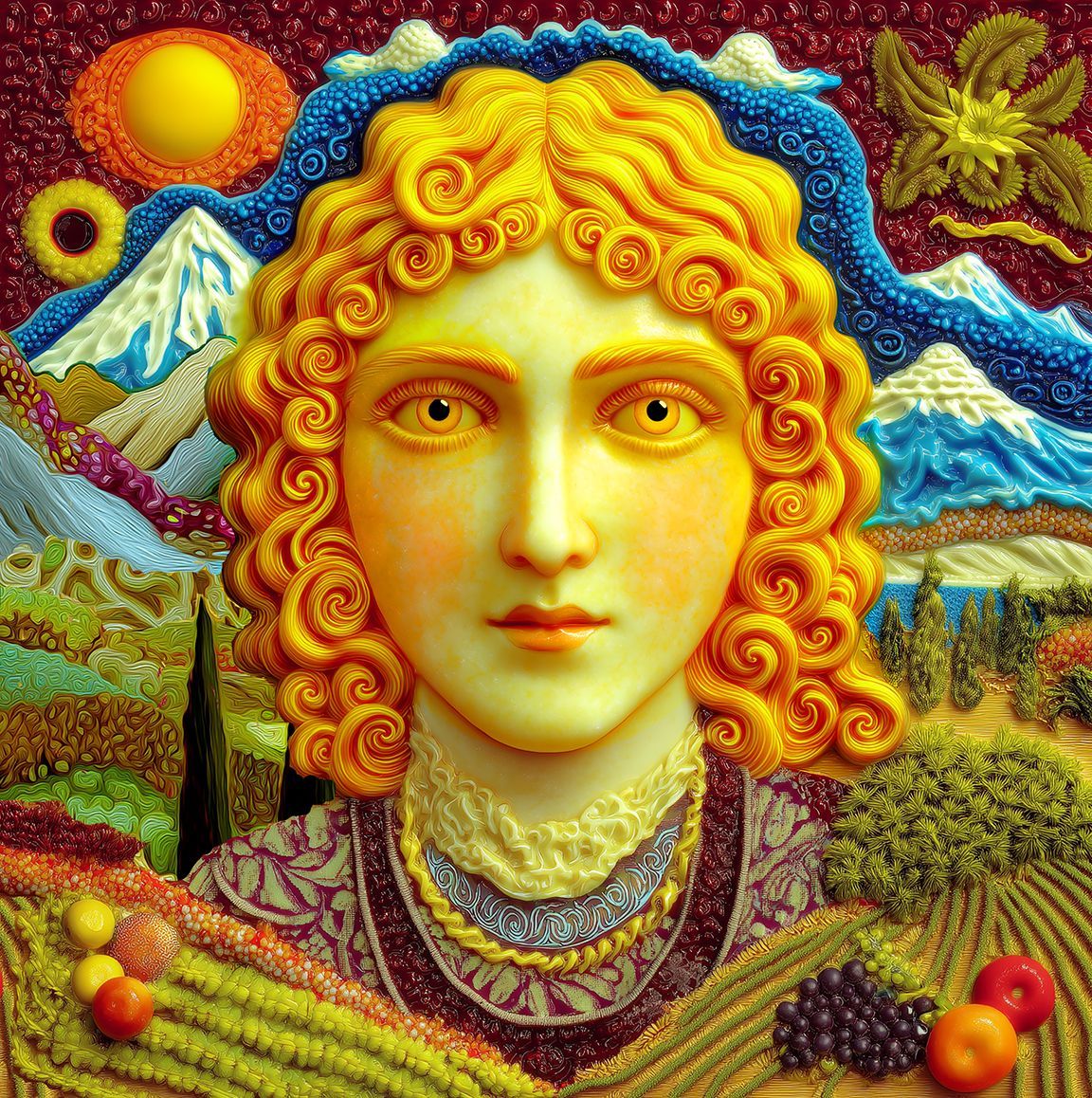
Yuna-Monu (Fresh Adult male)
Yuna-Monu is an eighteen-year-old Fresh Adult who only joined this circle two years ago at sixteen years of age, leaving his pre-adult world behind. He had been born and raised within another Circle of Eight of the Yuna Cluster and was now at the beginning of his trek towards Ripe Adulthood. Upon reviewing his Depth Tests, Yuna Cluster’s Leadership Ring determined he possessed sufficient promise to be introduced to this circle. Typically, upon reaching his full status roughly ten years hence, they would again deliberate on whether he would stay with this circle or, according to his emergent Uses, join another. In this case, it was deemed very likely that he would grow into one or both of his exceptional circle’s Defined Uses and remain a steadfast member for the rest of his life.
As an attractive lad with smooth white skin, dark yellow hair, and eyes, he had been a welcome balm after a senior cluster-mate, Yuna-Mania, had died out of the circle. Over the past two years, he has joined in caring for the circle's five pre-adults and participated in the more significant aspects of his cluster's life. He has also been trained in his circle’s two Defining Uses. Their Primary Use was within Kodrapum Grotto and involved the highly specialized work of the detailed recovery of precious material from the venerable Parayad Treasury. He had grown up learning about this precious legacy of his cluster, but now he joined those circles directly involved in this honoured labour. Their Secondary Use was part of this circle's generational role as Paramount Contacts with a specific Field Yelda cluster, Sama Cluster, far out on the distant Marachla Plain. Yuna-Mania, the aged cluster-mate Monu replaced, had been one of the last of the previous generation witnessing the initial dispersal of the Field Yelda, and Sama Cluster in particular, out of Royran Valley to their new home.
This image was created later in his life after he had chosen to pursue the second of his circle’s Defining Uses, succeeding the Elder Maja Yuna-Yuyuz in becoming the Paramount Contact for the Sumudin and the Yeldic Sama Cluster. The rendering, occupying a place of honour in Kodrapum Grotto, depicts him at the age he was during the momentous events of this novel.
Yuna-Monu’s Moment of Disturbance
While this remarkable lad had already distinguished himself in several ways, they all pale compared to his profound response to the Moment of Disturbance that followed the death of Majastas Zudaz I. His novel musings appeared beneath the surface before this event, but once She had died, the perceived delay in the Mantle possessing a new Majastas moved him to speak them aloud. In doing so, he revealed what had long been suppressed out of thinking for most: the need to discover the origin and nature of The Killing Swath. It may be difficult now to appreciate what a revelation his open enquiry had on the rest of his circle. Their lives were dominated by events leading up to, and following after, The Killing Swath. As with the rest of their generation, and many preceding it, few pondered why so little effort had been devoted to this explosive punctuation in Anu’s narrative. It is revealed in this tale that this was due to many factors. Immediately after what was formally known as ‘The Rectification,’ the Tolku survivors travelled to the Sanctuaries in the Mulungu Mountains of Rho-Jashun. Little documentation of any kind survives from this challenging period.
What characterizes this participating event is a term that would have sounded strange to the last generation of Tolku - ‘The Killing Swath.’ This is one of the earliest distinct expressions coined during the First Generation of The Interim. For the remaining seven centuries of this period, little to nothing survives dealing directly with any speculation or explanation of this event. This despite clear evidence, provided mainly by what is now called ‘The Final Tolku Proclamation,’ that the general population was well aware of what was about to happen and why. This apparent inhibition remains a subject of discussion and debate to this day. There is no dispute about the source of this continued silence during the first two centuries of the Secondary Epoch. The first Koru Majastas of the Secondary Epoch, Majastas Zudaz I, placed a Majastas Inhibition on the subject. By design, such inhibitions, as many features of most Generational Plans, are invisible to the fleeting generations of the Cluster-of-Clusters Nation. It is now known that the first Majastas discovered the Breathing Seals Conglomerations buried deep within the folds of The General Plain within Tatchlan. They contained profound instruction from the Primary Epoch Majastas Dynasties, and many of their revelations were unsettling to Majastas Zudaz I. There is little indication of this in Her Majastas Annotations. Still, other evidence suggests She spent much of Her Reign attempting to shore up the new Koru presence within the Living System to be ready to learn the truth of their origins and what brought them to their present state.
All this ended with the sudden death of Majastas Zudaz I. As all those deeply linked to Her through their Maja, young Yuna-Monu was profoundly affected by this. Something of a seismic shift took place within The Living System of Tatchlan. This first Moment of Disturbance of the Secondary Epoch affected all those under the Majastas Hand to varying degrees, some immediately and some incrementally. Our Fresh Adult’s urgent enquiries led to an opening within his circle, particularly his beloved Yuna-Nobov and Lapis Between Yuna-Mosum.
Yuna-Monu’s Yelda and Yakku experience
Very few Fresh Adults are inducted into two Defining Uses. However, while delving into the arcane world of their Parayad Treasury, he also joined his new circle as ‘Paramount Contacts.’ As with the rest of his circle, initially, this meant regular visits to the Sama Cluster out on the vast Marachla Plain. Yuna-Monu found this assignment challenging for many reasons. The first was being exposed to the Daymaker on unprotected land under the ‘Upper Abyss.’ The Field Yelda knew the Sumudin’s sensitivities well and endeavoured to conduct most meetings during the ‘Velvet Night.’
Yuna-Monu found much to fascinate and mystify him in these Field Yelda and continued his education during this tale. Far more surprising and challenging was his circle becoming Paramount Contacts for the Yakku of the nearby Kalasek Estate. While there had been sporadic contact before our story, the general policy was to allow the Field Yelda to be their primary link to the Koru Cluster-of-Clusters Nation. Yuna Circle was now thrust into an enormous arena examining the previously unheard-of notion of a Yakku Double requesting a Healing Vat Egg. In this matter, Yuna-Monu’s circle shared his profound innocence of all aspects of this novel situation.
Acclaimed Professor and Teaching Academic Xumb-Chulash correctly declared this circle was leading an exotic life.
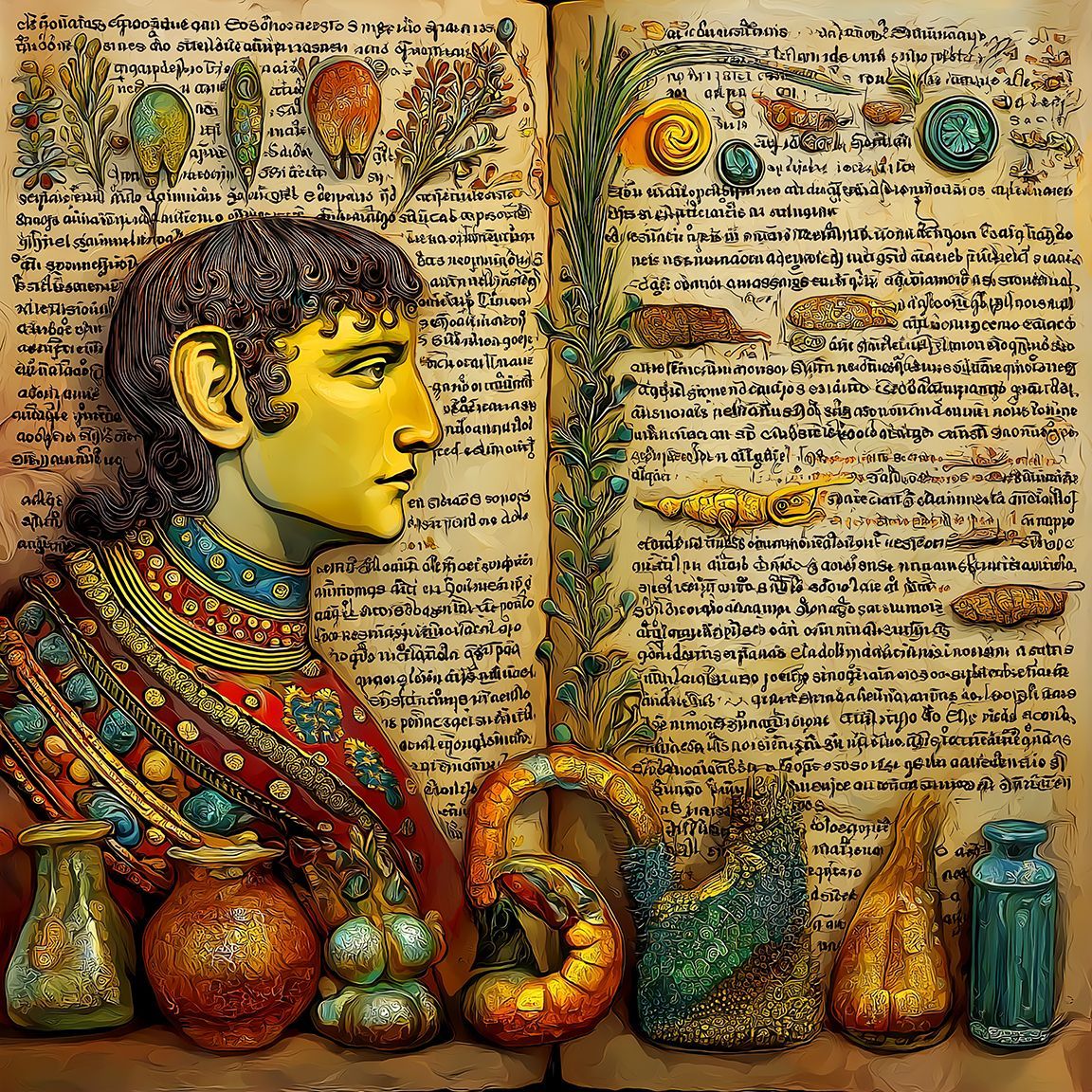
Yuna-Nobov
This tall thirty-seven-year-old, with his long brown hair (darker than most Sumudin) and deep voice, is one of three cluster mates of this talented Circle of Eight to distinguish themselves within the Primary Use of this circle, that of the Parayad Treasury. Another is Maja Yuna-Honos, an overseer of their Treasury work; the third is Lapis Between Yuna-Mosum. In the case of Yuna-Nobov, who devoted himself to both the recovery of their Treasury’s contents and preparing reports on them for six years after becoming a Ripe Adult, this immersion in the honoured past inspired him to become a designated ‘Venerable Scholar’ upon reaching his full maturity. He was more than qualified for preliminary examinations. He was allowed to travel north and east for over four thousand four hundred andas to the new wonder of his generation, the Kupat Queens One Living Mountain.
He studied and lived within the Living Mountain for the next seven years. He and Yuna-Mosum, also conducting research there, made regular trips back to Mount Arnom. They happily returned to assist Yuna-Honos and the rest with their work within the Parayad Treasury. Shortly before this tale began, both had completed their formal education and had only to make ceremonial recitations and receive their certifications within Kupat Queens One to assume the full honours and responsibilities of their academic professions. While his scholarly work and dedication to Parayad consumed much of his time, he also enjoyed pursuing a personal interest in the history of the ancient port city of Bhampay.
This large plaque, done in a raised style, is mounted within
Kodrapum Grotto. It commemorates the accomplishments of Yuna-Monu, who later became a notable
Venerable Scholar specializing in the collection found within their
Parayad Treasury. The inclusion of objects at the bottom refers to a trend at the time of making small sculptures of some recurring graphic elements in some
Treasury material.
While the plaque was composed after his death, his portrait is based on others made shortly after the events of the Amarel Mountain story.
Yuna-Nobov’s fear and frustration
While he adores their new circle mate, Yuna-Monu, the Fresh Adult’s sudden enquiries into what had been a taboo subject within the Living Mountain, ‘The Killing Swath,’ profoundly disturbed him, revealing the Moment of Disturbance having a different impact on him compared to the others. It unsettled his previous assumptions without initially resolving into new concepts to fit his changed comprehension of his world. His circle mates continued questions and critiques of what he was taught and shown concerning the subject are matched by his growing doubts. He looks back on his unthinking acceptance of what suddenly appears suspect and is increasingly filled with regret. More than this, a fear grows in him at the suspicion that their recently deceased Majastas was the cause, particularly in the fate of six academics who appeared to have striven against the Majastas Inhibition and ended badly. As events unfold, he comes to terms with these feelings due to the devotion and support of his circle and cluster and his growing appreciation for the many revelations everyone experiences during this momentous year - the greatest being the discovery of The Final Tolku Proclamation.
Yuna-Mosum (Female LAPIS BETWEEN)
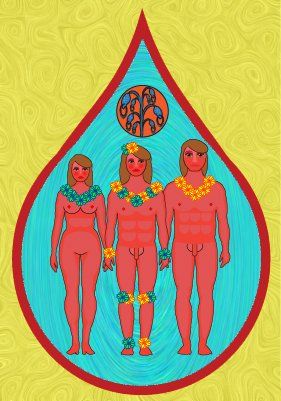
There are eight Spokes in the Cluster Wheel: Maja, Elders, Touched, Doubles, Betweens, Completes, Dreamers and Mundanes. All Betweens share specific characteristics. Unlike Completes, all Betweens are born either female or male. Nevertheless, it is evident in early pre-adulthood that they possess an enriched gender spectrum. This means they are endowed with unique sensibilities and serve as ‘bridges’ in daily cluster functions and particular ceremonies. There are Seven Aspects of Betweens, each manifesting and emphasizing certain features and attributes. Lapis Betweens, the fifth of the seven Aspects, is known for being one gender while presenting prominent physical and mental characteristics of the other.
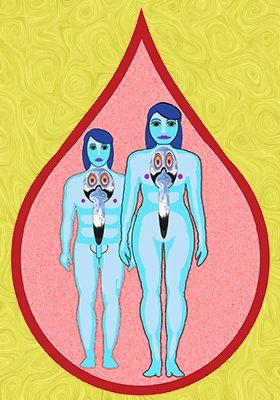
Female Lapis Betweens are generally broad and tall, with deep voices. Male Lapis Betweens tend to be relatively small and fine-featured compared to Mundane males. Pictured here are two Danam Yeldic icons for Betweens. One is the general icon for all Betweens, showing a male Between with a woman on one side and a man on the other. The other icon is specific to the Lapis Aspect, pictured as their gem name, Lapis, which would suggest blue. Lapis is closely associated with the Sixth Principal Face of Tatchlan, Neferdush.
Path to Becoming an Esteemed Librarian

At the time of this tale, Yuna-Mosum is a forty-four-year-old female Lapis Between. Evident traces of ancient Koru ancestry add to herhis imposing stature. Shehe is affectionately said to possess wide and somewhat square ‘Koru Hands.’ Shehe is broad and robust with a deep voice and a confident manner. Like herhis fellow circle mate and academic, Yuna-Nobov, shehe was nourished by the Primary Use of herhis circle and enthusiastically worked within Kodrapum Grotto’s Parayad Treasury. Herhis strength was organizing existing collections of recovered Treasury materials, cataloguing, and series moderation.
Shehe also proved a valuable resource for scholars, researchers and students accessing this material. Shehe found herhimself in Kupat Queens One Living Mountain pursuing herhis designation as an Esteemed Librarian. Shehe arrived four years before Yuna-Nobov but was only ready for herhis own certification and ceremonial recitation at the same time. This was due to herhis bearing two children. These two girls arrived later in herhis studies at the Living Mountain. At the time of this novel, Yuna-Mosofu is seven, and Yuna-Mosumu is four.
As with all child-bearing scholars at the Living Mountain, ample provision had been made for herhim to return to Mount Arnom and for herhis birth travails and subsequent feeding and weaning. Herhis circle, attended by two other Yuna circles focused on pre-adult care, had caressed and maintained them since. These pre-adult tenders are known by many names, including Nurturing Circles and Support Circles. At different times in the life cycle of a cluster, the number of circles devoted to this task may reach one-third of the total.
Lifts herhis toes and drags herhis heels
This ancient phrase was given to Lapis Between Yuna-Mosum by herhis fellow students for herhis exceptional dedication to herhis studies. The expression may come from an unknown literary source but, currently, is understood as a metaphor. It was as if shehe called Anu’s attention to herhis progress by ‘scoring’ the Skin of Anu with each step. Shehe was also known for herhis independent thinking, leading herhim to challenge instructors and not be lured into student trends. The younger Yuna-Nobov saw himself as less narrowly focused and entertained several theories later proven unsound. In time, Yuna-Mosum’s clarity of thought earned the grudging respect of herhis cluster-mate, along with presiding academics and fellow students.
Lapis Between Yuna-Mosum and the Moment of Disturbance
While Yuna-Nobov enjoyed studying the ancient Sister-City of Bhampay in his spare time, Yuna-Mosum acquired an interest in what initially was viewed by all as a far more obscure subject - the ‘Moment of Disturbance.’ There were recorded instances of this phenomenon during the Greater Era of the Primary Epoch, but much remained unknown about this novel event, and few pursued the subject.
This unlikely avocation proved vitally important when it became clear the entire Koru Cluster-of-Clusters Nation was undergoing its own Moment of Disturbance following the sudden death of its first Majastas, Zudaz I. Shehe as swift in grasping this situation and had to push a reluctant Yuna-Nobov and the rest of her circle into appreciating what they were all going through. Despite young Yuna-Monu’s ignorance of this concept, his clear demonstration of its effect was a robust verification of herhis theory.
Pictured here is the Danam Yeldic icon for the Moment of Disturbance. This icon is deemed to have greater power to ‘summon’ than the original Koru version.
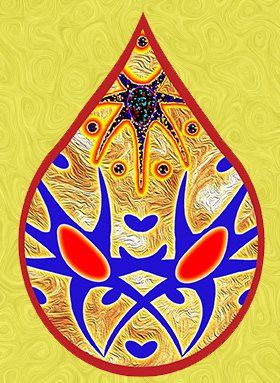
The above image is one of a series of Library Ornaments of Yuna-Mosum, sculpted to fit in a bookcase. Shehe would later become distinguished for managing the burgeoning collection of materials surrounding the Final Tolku Proclamation, which shehe had seen uncovered during this story. This series covers several periods of herhis life, this being the earliest, during the events of Amarel Mountain.
Yuna-Yuyuz (MAJA/Female)
Aged forty-six, Yuna-Yuyuz is light-skinned with notably large eyes and a broad nose for a Yelda, hinting at her sharing Lapis Between Yuna-Monu’s Koru ancestry. She is one of forty-nine Maja in the Yuna Cluster. She is also one of two Maja within her circle, along with Maja Yuna-Honos. She is the mother of three of her circle’s five pre-adult children: Yuna-Yumon, a female aged sixteen; Yuna-Yunob, a male aged thirteen; Yuna-Yuhon, a male aged eleven. Yuna-Yumon is about to have her Life Cake Ceremony, designating her as a Fresh Adult ready to join a new Circle of Eight.
Beyond these internal duties, Yuna-Yuyuz is passionate about the Secondary Use of her circle, that of being a Paramount Contact with the Field Yelda on the distant Marachla Plain, Sama Cluster. She embraces the new links to the Yakku of the neighbouring Estate. She is an able representative of the Sumudin to Viperfer, the Foremost Moval of the Kekavil Nest and her exceptional Double daughter, Sensarab. She also finds herself as her cluster’s liaison with two formidable guests, Acclaimed Professor and Teaching Academic Xumb-Chulash and Submissive Enumerator Maja Zudaz-Shushum, when they visit Kodrapum Grotto to view the newly discovered Final Tolku Proclamation.
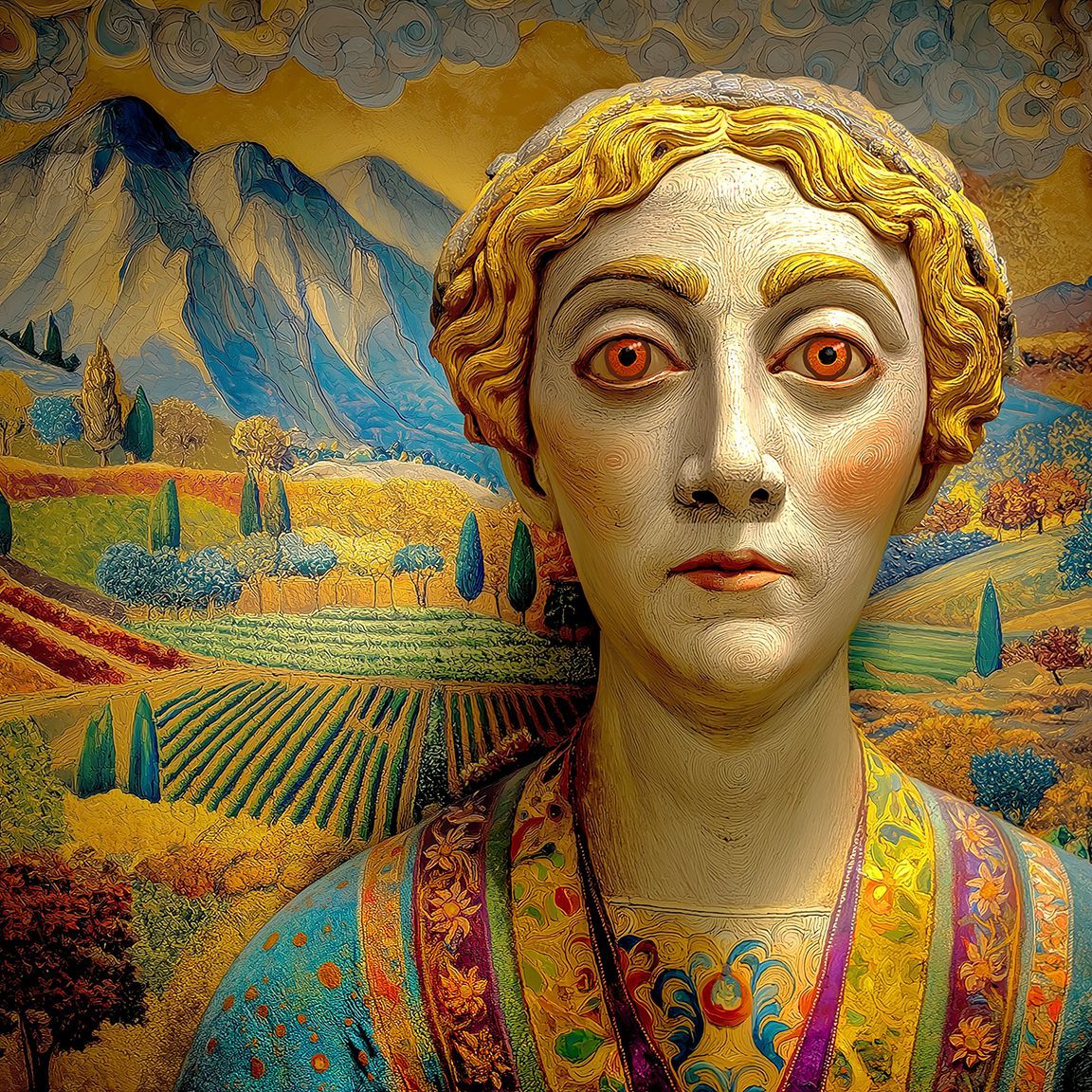
This image illustrates her focus as Paramount Contact with the Yelda of Sama Cluster, with their fields and orchards stretching out behind her. At the same time, she retains her connection to her cluster within the Mulungu Mountains.
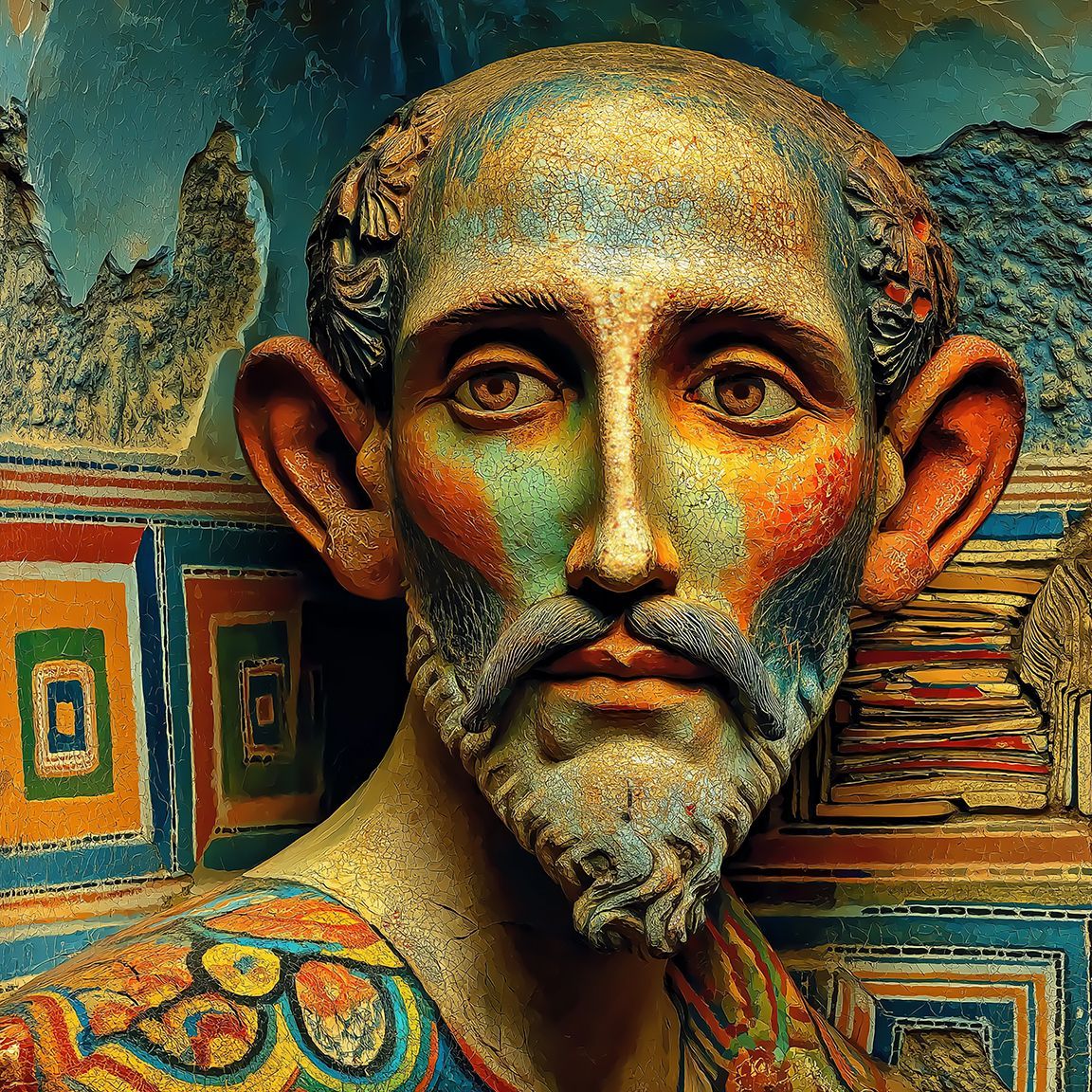
Yuna-Honos (MAJA/Male)
Yuna-Honos was the tallest and thinnest member of his circle, with pronounced Yakku features, including larger-than-average ears. This fifty-nine-year-old Maja, along with other Yuna circle designates, was an overseer of the unpacking of Parayad Treasury crates and the disposition of their contents. He sat on various councils devoted to the ongoing logistics and other issues of the larger work. Beyond serving as his circle’s second Maja, Yuna-Yuyuz was immersed in his circle's Primary Use. He had little involvement in their Secondary Use as Paramount Contacts with the Sama Cluster. More than any other member of his circle, he had a comprehensive knowledge of all aspects of the Parayad Treasury’s two thousand and sixteen crates, divided into eight sets of two hundred and twenty-four, one for each of the ‘Wise Spider’ Treasury chamber’s ‘legs,’ and an additional two hundred and twenty-four on the walls of the central body cavity. Several generations of this and other circles within the Yuna Cluster had, at the time of this tale, excavated seventeen thousand, two hundred undamaged items from the first thousand crates, meaning several subsequent generations would continue to be employed in this opening.
This image is a small portion of a monument erected ten years after the discovery of the Final Tolku Proclamation, outside the entrance to the Parayad Treasury enclosed inside the Sanctuary Mountain of Arnom, within Kodrapum Grotto. Notwithstanding its importance, it was not treated with Preservation Cubes for several decades and was damaged by an Anu Quake. It was then preserved as it stood. This is the only verified likeness of Yuna-Honos from this time, and all subsequent portraits are based on this figure.
Crate chronology error

One of the councils Maja Yuna-Honos attended was known as the ‘Standards Advisory.’ It grappled with what was a challenging issue for all Treasuries. In none of these thirty-two known sites was there any guide as to the chronological disposition of the crates. In each case, extensive work was initially done to solve these riddles. The aim was to open each box to provide a sequential framework for Esteemed Librarians and Venerable Scholars to examine the material.
At the outset of the Secondary Epoch, sixteen, or half, of the Treasuries were found to have laid down their contents in the following order, termed ‘Treasury Standard.’ All Treasuries are positioned north, meaning the ‘head’ of the formation was always precisely oriented. This meant the ‘body’ could be easily divided into cardinal points. Within Treasury Standard sites, the outmost tunnels, or ‘legs,’ on the western side were filled during the Primary Epoch from the back to front, starting at the hind legs and moving forward. Then, the hind legs on the eastern side were filled from the southernmost to the northernmost leg, culminating with the central body cavity, which was last.
Unfortunately, the other sixteen Treasuries diverge from this pattern in several ways. While Parayad was the first Treasury discovered nearly one thousand years ago at the commencement of The Interim, for many reasons, the intensive regime to explore its contents systematically was not established until early in the Secondary Epoch. When this began, earlier generations of Yuna Cluster found, to their dismay, that Parayad appeared to be one of the ‘chaotic Treasuries,’ not adhering to Treasury Standard. It was eventually determined that the three back legs on the western side were filled in order, but then the central cavity was filled. Then, the three back legs on the eastern side were filled before the front west and the front east leg. This is not the most unorthodox Treasury of this ‘chaotic’ class.
All these terms camouflage the fact that these designations were imprecise at best. In the case of Parayad Treasury's case, it is determined that its title was incorrect during this novel, and it conformed to Treasury Standard. This meant the previous and current generation, who had worked on opening the central cavity crates, revealed the site's final works. Due to evidence within this Treasury and works in many of the others, it had just been determined that Parayad was the final Treasury to be sealed. Maja Yuna-Honos participated in the work of the Standards Advisory, leading to this determination. It must be appreciated that this was a significant chapter in his life that is only briefly touched on in this novel. What is rightly focused on is that the final crate in this section had the most significant document of the age added to it, the ‘Final Tolku Proclamation.’
Yakku: Foremost Moval Jovikel
Dramatic yearly years
Even before this story begins, there can be no doubt that fifty-two-year-old Foremost Moval Jovikel had led a noteworthy life. He was born in the year 234 of the Secondary Epoch. At ten years of age, he experienced the chaos of the movement to ‘punish’ the already defeated Suvuka on Thermistal. During this youthful period, as the second son of Velparun, the Foremost Moval of Bithen Regional Tree, the young Jovikel witnessed the gatherings of many elders and captains of every field of endeavour within their capital of Gye Sonin.
Three years later, at thirteen, he witnessed the survivors' return, including his elder brother Jakapil, aged twenty, from that terrible campaign. He sat in on his brother’s extensive public declarations to various forums and gatherings as a ‘Dissenter.’ Jakapil detailed what he had witnessed. He repeatedly spoke of his profound regret for defying his father and joining what he now called an act of genocide.

The following year, 248 UKC, Jovikel accompanied his ailing brother and their father on a strange pilgrimage. They travelled to the ‘Ring Lakes' formation shared by the Medebe and Watejas Regional Trees in northwestern Thermistal. The siblings viewed several towering Wajah, heard their booming yet muffled words, and watched as the Djingal priesthood, in their yellow robes featuring the silhouettes of three Wajah, made a great show of interpreting these enigmatic utterances. Velparun wanted his two sons to witness what he considered the source of many of the problems that had gone wrong in the Yakku Collective. Despite his eldest son and heir’s deteriorating health from his injuries from a persistent Tarops infection, Foremost Moval Velparun rushed to prepare both sons for eventually assuming his position. He lavished the best care available on his eldest, Jakapil, while his younger sibling, Jovikel, now received full briefings and sat in on all councils as the second heir apparent. Jovikel also began to serve as an apprentice administrator in the Judicial Hand of Service. Shortly before Jovikel turned fourteen, his brother Jakapil died.
This is a portrait made of Foremost Moval Jovikel by an artisan of the Yuna Cluster on the occasion of his and his family's formal induction into the Kekavil Nest of Kalasek Regional Tree (shortly after the end of Amarel Mountain).
Jovikel becomes heir
In the sad year of 249 UKC, Jovikel mourned his brother’s death and began his new life, all at the tender age of fourteen. Already partially prepared from witnessing his brother’s training and attending all councils as a joint heir apparent, he now took his seat in school and executive sessions. He attended intensive forums and examined many ancient documents on the Yakku and his Regional Tree’s history. He was taught that everyday experience was worthless unless grounded in the historical antecedents leading to the present. While Foremost Moval Velparun led with a strong hand, he devoted himself to his remaining son and new heir with patience and kindness. They formed a father-and-son partnership overseeing all aspects of Gye Sonin and Bithen Regional Tree governance for the next ten years. While they attended to many matters, one subject gradually gained more attention than the rest - the scope of the influence of a previously discredited religious movement known as Siv-Sa was now becoming apparent. The triplet founders of this religion had died near the commencement of the first year of the Secondary Epoch. Their teachings were deemed by many thinkers of the time to be a ‘backwoods’ folly doomed to die away. Two hundred years later, this prediction was proven incorrect. While the primary academics and cultural leaders decried its irrational influence degrading the common understanding of Anu, the ‘Four Schools’ had come into being. While three were of minor concern, the Djingal Votary had been marked for singling out the Venerable Koru for an unprecedented level of vitriol. Jovikel had grown up within the elite consensus of the Crown Rises regarding the many benefits of the Yakku having good relations with the Koru. Beyond this, he had a personal reason for being offended by this belief.
Yesosel and Suv-Unua
Yesosel, born the same year as Jovikel, was a childhood friend whose family also served within the same Crown Rise of Gye Sonin. Although since Jakapil’s death, the two friends tread very different paths, their friendship continued. Given Bithen Regional Tree’s proximity to the Viracocha Mountains, it was customary for Yakku with various academic, governmental or professional standing to have relations with the Koru Clusters living there. Foremost Moval Velparun himself made a point of regularly travelling to a designated location to conduct business with the Koru, and during this time, Jovikel was often in attendance. In the year 270 UKC, Foremost Moval Velparun, aged sixty-one, began relinquishing various offices to his son. The following year, Jovikel and Yesosel, now thirty-seven-year-old adults, found themselves on separate business at a Gifting at the Suv Cluster within the Viracocha Mountains. They happily engaged in all customs at this event, but Yesosel was particularly struck by one thirty-three-year-old Koru Ripe Adult named Suv-Unua. Long after Jovikel had moved on to other business and relations, Yesosel found reasons to return. The Leadership Ring of Suv-Unua’s cluster deemed Yesosel a ‘benefit,' the following year, 272 UKC, Suv-Unua gave birth to a daughter named Hiten. As with all unions between Yakku and Koru, Hiten was born a Yelda. Bithen Regional Tree’s Foremost Moval and his son celebrated this new chapter in Yesosel’s life and regularly welcomed this new family into their Moval Residence. Foremost Moval Velparun even publicly mused that this public display would pave the way for others to re-enact what was known as ‘The Happy Century’ during The Interim long ago.
It had been the custom in earlier times for such offspring to spend half the year with their father and half with their mother, known as the ‘Half Year Rite.’ Only in the past few centuries had this earlier observance become less common. Suv-Unua subsequently gave birth to a Koru child within her Circle of Eight and urged Yesosel to rear their Yeldic child in Gye Sonin. Yesosel and daughter Grivel made frequent visits to their ‘Mountain Mother.’
While the Foremost Moval regretted not observing the ‘Half Year Rite,’ he revived another ancient institution known as ‘Yeldic Newborns League.’ This once well-established organization supported families of first-generation Yeldic children to gather and celebrate their heritage. Centuries ago, they had several prominent settings throughout Gye Sonin, but now all were given over to other uses. Despite knowing others were in the same situation, Foremost Moval Velparun and Jovikel were disappointed with how few came to join this revived association. They extended the mandate of the League to include Yakku with second and third-generation Yelda in their midst. While more came, there was also muted but growing criticism of the revived affiliation, once celebrated in story and song, from several quarters within Gye Sonin. Beyond such overt commentary, it was noted how a growing number of Yakku expressed quiet discomfort over what had been a common occurrence only a few centuries earlier. Two years later, in 274 UKC, Yesosel would take home their second daughter, Grivel. As was the custom at the time, Yesosel had formally requested that his lifelong friend, Jovikel, assume the legal position of Guardian of his two daughters in the unlikely event of his premature death.
Fateful year
In the year 276 UKC, ten years before our story commences, when Jovikel was forty-two, his father and his dear friend died, and he suddenly became the father of four children. The year began with Foremost Moval Velparun, who had largely relinquished his titles and responsibilities six years earlier, dying in his sleep. This led to Jovikel immediately undertaking all offices of his position. After many affairs and one particularly intense liaison with a woman at the Judicial Hand of Service, Jovikel met who would become his lifelong partner, forty-year-old Vivavem. Both men found no little amusement at both of them having had a former relationship with the same Judicial Hand of Service woman. This took place two years before, in 274 UKC, just over a year before Velparun’s death. Jovikel’s father warmly welcomed Vivavem into the family as the future consort of the next Foremost Moval. Thus established in his office and his life, Jovikel found himself unexpectedly mourning his dear friend during a shocking event, taking on the role of Guardian of these two children and two more orphaned by the same tragedy.
Demise of Newborns League
The Yeldic Newborns League had been gathering at a regular location for several years. While still a small group, it was becoming well known due to it receiving patronage from the former and now current Foremost Moval. Along with gathering and fellowship, they were encouraged by their powerful sponsor to improve their status through public education. Among other initiatives, they had revived several once-acclaimed theatrical productions from past ages, celebrating their role within the Yakku Collective and had gathered to finalize plans for another. All members and their Yeldic offspring were present except for four children. Hiten and Grivel had both come down with a fever. Two boys, one twelve and the other a less than a yearling, named Wikesile and Vimit, keep them company. These two boys shared a Koru grandmother, although she was long deceased by this time. The boy’s parents had been guests at the Foremost Moval Residence household on several occasions. Yesosel and the boy’s parents left them all in the Residence care so they could attend the meeting, where Yesosel contemplated finding the courage to appear as one of the players in the upcoming production.
A fire broke out suddenly on their Mernet Landing, fed by sudden gusts of ‘Racing’ and ‘Bowing’ Winds. Despite heroic efforts, the conflagration was sufficiently profound and intense to cause the entire platform to come apart, causing all four hundred and forty-five adults and children to fall, burning to their deaths. An investigation determined this was an act of premeditated murder by a single deranged individual who hated not only Koru but all Yelda, being ‘tainted’ by Koru seed.
She had coated all walkways leading to the platform, along with the venue itself, with an illegal accelerant. She covered it over with pungent chips that sufficiently masked the accelerant’s odour, which was also dissipated by the windy day. She had started the fire before seating herself at a vantage point to watch the horror she had caused while singing Siv-Sa songs. A subsequent examination of her determined she was profoundly delusional.
While her effects revealed extensive Djingal Votary material (Koru emblem of the Votary shown here), there was no proof of this organization having any direct involvement with this frightful woman. To his credit, the horrified and grieving Foremost Moval Jovikel, after closely reviewing all the evidence, was forced to conclude she had no plausible link to an organization he despised. This was followed by an extensive inquest where the Chief of Police and Chief Litigator Office both declared the Djingal Votary, despite their expressed aims, had no active role in this atrocity. While senior commentators at the time drew a solid causal link between the Votary’s outspoken positions and this individual, stating they provided the conceptual focus to fuel her crazed obsessions, no charges were ever laid against them.
During this tragedy, a young officer in the Sonin Police force named Chekuvan made regular reports to the mourning Foremost Moval. A mutual respect and regard grew between them, continuing up to the events of this novel, by which time Chekuvan had risen to become the Sonin Commander for the city.
Fathers of four
The four children had played, eaten and rested before the news reached them at The Residence. Both Jovikel and Vivavem gently took Wikesile aside. The boy was the eldest at twelve years of age. The other three were too young to take in the news. Yesosel’s two girls, Hiten and Grivel, were four and two. Tiny Vimit was still an infant, under the watchful eye of his elder brother Wikesile. Jovikel, Vivavem, and Wikesile then approached the two girls and did their best to inform them gently. Amidst a chorus of weeping, they clung to each other for the remaining hours of that day. Subsequent investigation revealed the full extent of the loss, including the unwelcome verification that all Wikesile and Vimit’s family members were among the dead. Jovikel, without hesitation, extended his Guardianship to include these two bereft boys, meaning he and Vivavem were now fathers to these four children. They all travelled to the
Viracocha Mountains to mourn with
Suv-Unua and her
cluster. They had profound ceremonies to honour the grieving family that did much to bring a measure of comfort to them. For the next ten years, leading up to the start of this novel, Foremost Moval and Consort Vivavem raised these children. They judged it best to move away from the capital, Gye Sonin, to give them a quiet life. They also hoped being outside the city would help shield them from the growing ignorance and xenophobia. Jovikel redoubled his efforts to continue the strong governance of his father and do all he could to counter the
Djingal Votary’s influence. Their part of this tale details the culmination and conclusion of this chapter of their lives.
Vivavem (Moval Consort)
Witness to history and family discord
Born in Gye Sonin in 236 UKC, Vivavem grew up in a moderately well-placed household in the capital. For generations, his family had quietly maintained the elite consensus concerning relations with the Koru. Thirty years before Vivavem’s birth, his elders had attended many celebratory events in Gye Sonin, embracing the initial news of Majastas Zudaz I sterilizing all Suvuka herds on Thermistal. In subsequent decades, this initial chorus receded as a contradictory one took its place. Whispers were heard of a growing dread of how the Koru could potentially overpower all Yakku from afar. Coupled with these were widespread calls to punish the Suvuka for their long reign of terror over the Yakku. Vivavem’s early childhood was marred by a rising hysteria within the Yakku Collective over the fate of the Suvuka and how some of his older siblings were pulled into this irrational frenzy.
While none of these youths succeeded in joining the war, his young ears were still stung by these terrible rifts breaking out within this family during the final Suvuka war. In the year 247 UKC, Vivavem, aged eleven, witnessed some of the first waves of survivors returned and heard their disparaging narratives of the war and the crimes committed by the ‘despicable Tarunachit.’ That same year, he and most of his family attended a large forum and heard the first-born son of their Foremost Moval Velparun, named Jakapil, tell his tragic tale. They all then saw subsequent waves of triumphant Tarunachit return and marvelled at their contradictory accounts of the same events. The elders of his family agreed that the best course in such dangerous times was one of quiet neutrality. As the years passed, the youthful Vivavem watched the growing tumult within his Yakku nation while continuing to cultivate his family’s impartiality.
Nevertheless, in such extreme times, nuanced neutrality was no match for blind fanaticism, and two of his siblings broke with the family. Vivavem remained loyal and devoted himself to his studies. Upon graduation, he moved through various positions as a young adult until he arrived at the Judicial Hand of Service in the year 267 UKC at thirty-one years of age. He established himself and conducted a distinguished career for the next seven years. As a handsome and likeable young man, he made many friends and conducted several romantic liaisons during this time. However, the one who struck him was the brother of the famed Jakapil, son of the Foremost Moval, who had died twenty-five years earlier. Vivavem was formally introduced to Jovikel, who was two years Vivavem’s senior, in the year 274, when he was thirty-eight. Already possessing the air of the next Moval, this initially intimidating figure quickly warmed to Vivavem, and they progressed swiftly from friendship to intimacy. He was conducted to the Foremost Moval Residence and was received warmly by Jovikel’s wise and kind father, Velparun. Two years later, in the fateful year 276 UKC, when Vivavem was forty years old, his life was forever changed by Velparun’s anticipated death, followed by the tragic Yeldic Newborns League fire.
Vivavem became a nurse and comforter for his Jovikel and their four children. Jovikel was thrown entirely into his Foremost Moval role while dealing with a personal, and a Regional Tree, calamity. His days were long, and when he returned, he struggled to meet his new family’s needs. Vivavem found a dear ally in dealing with all this from the girls' mother, Suv-Unua, who provided care and counsel to him. His own Yakku family also provided what respite they could to this battered family. With time and their relocation outside the capital, everyday life commenced. For the next ten years, leading them to that fateful Agility Trial at the beginning of our tale, Vivavem devoted himself to caring for his beleaguered husband and joining Jovikel to provide their children with a safe and calm home.
Yakku of Rho-Jashun
Kekavil Nest of Kalasek Regional Tree
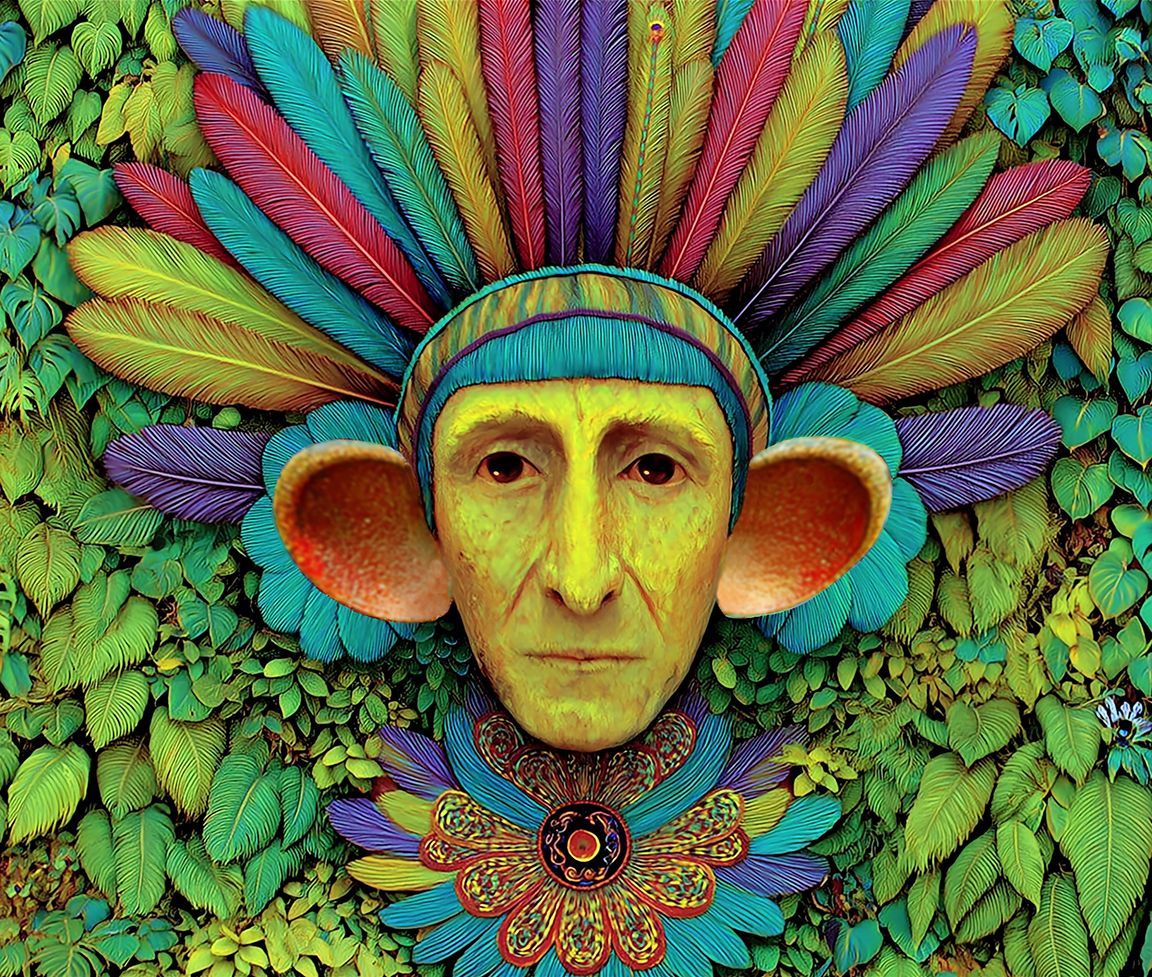
Viperfer
Mature pedigree
While Viperfer, the Foremost Moval of Kalasek Estate, represented the third adult generation of Yakku arriving close to the same time as the ancestors of Sama, Danam, and other Field Yelda Clusters to this portion of the broad Marachla Plain in the year 200 of the Secondary Epoch, their pedigree was far more mature. Over seven hundred years earlier, during what came to be known as ‘The Happy Century,’ beginning in the year 178 of The Interim, the first Yelda were engendered within the heat of the Koru and Yakku discovering each other. Along with the professional and curious, those Yakku wishing to join their Yeldic progeny crossed the Panchala Sea to Rho-Jashun. Despite the vast Suvuka herds reigning supreme on the open Marachla, hundreds of small and secure valleys within the Mulungu Mountains became their new home. There, the Mernet and other Yakku specialty seeds they brought took root and flourished, allowing for a collection of small Yakku settlements to thrive securely within the bosom of the Central Triumvirate. This coincided with the Koru establishing themselves deep within the Viracocha Mountains on Thermistal. The Yakku of the Mulungus and the Viracocha forests had regular contact for the next hundred and forty years. Even in this short period, significant changes in culture and perspective began to be noted by visitors from Thermistal.
In 322 of The Interim, eleven of the twenty-three Regional Trees of the Yakku Collective stopped all migration to Rho-Jashun. While the remaining twelve maintained their links, this action is now pivotal to the Yakku of Rho-Jashun turning away from the Collective of Thermistal.
While most customs and institutions were maintained, they took on a different hue in the new environment of Rho-Jashun. A clear indicator of this divergence came with the arrival of the first Majastas of the Secondary Epoch, Majastas Zudaz I (Zudaz Dynasty icon displayed here). While the Yakku Collective of Thermistal fractured in contending attitudes towards this clear indication of the Tatchlan System made fully manifest among the Koru, the Mulungu Yakku welcomed the news.
In the two centuries leading up to the extinction of the Suvuka and subsequent dispersal of both the Yakku and Field Yelda on the liberated Marachla Plain, the new Majastas visited many of the valley enclaves as part of her Generational Plan to establish Yakku Estates. Her Majastas Annotations make clear Her intention that these Estates would create healthy links between both halves of the former Tolku and serve as focal points for the Field Yelda clusters. She also stated in more ambiguous language that a deeper aim was to ensure the Yakku would find Tatchlan within themselves.
Surveyors General and Estate plantings
Shortly after Majastas Zudaz I's famed walk through Enimik Round in 98 UKC, the Surveyors General institution was fortified to serve a new arm of Her existing Commandant Ministry, the Land Stewards Clusters. Encircled by Calamity and Engineering Bureau corps, these Surveyors General cohorts spread across the Marachla Plain to exhaustively survey an immense landscape scraped to nearly nothing by the Suvuka. All of what had been a vast Primary Epoch Tolku patrimony, both urban settlement and infrastructure, was found to be ground to dust.
In many places, the cumulative pounding of Suvuka paws for seven hundred years radically altered the landscape. Nevertheless, this raw topography displayed the promise of rich loam for Yeldic cultivation and the scope for deep Yakku Mernet tree roots. An intricate map of intersecting locations was established across the enormous plain. A century before the Field Yelda issued out of the Royran Valley in 200 UKC, the future Yakku Estates were planted. Foremost Viperfer’s adult grandfather and very young father would have arrived at a tall stand of mature Mernet and other Yakku trees designated as the Kalasek Estate. Among themselves, they referred to it as Kalasek Regional Tree and divided it into four nests, one of which was Kekavil Nest, where Viperfer was born and now reigns.
Pictured here is the Field Yeldic icon and one of many Koru emblems representing the Yakku.
Daughter radicalizes mother
Were it not for her daughter,
Sensarab, manifesting as a rare
Yakku
Double, it is doubtful
Foremost Moval Viperfer would have had any reason to challenge long-held prejudices against the appearance of any
Spokes of the Cluster Wheel among the Yakku. While her ancestors had emigrated from
Thermistal centuries earlier, the divergence in attitudes among the Yakku and
Koru concerning
Tatchlan persisted, though much diluted compared to the
Yakku Collective of Thermistal. Such is the inertia of tradition. That said, the cumulative effect of descending from generations living amicably among the Koru and now the
Yelda wore down the sharp points of this ideology. By the time of our story, while still in place, this idea system could no longer withstand verifiable evidence of its falsehood. Sporadic news of extreme events on Thermistal also alienated the Yakku of
Rho-Jashun from their ancestral homeland. All of these factors made what remained a radical step far less demanding to take. The fact that Sensarab was Foremost Moval Viperfer’s daughter brushed aside the last vestiges of resistance from within the Yakku Nest.
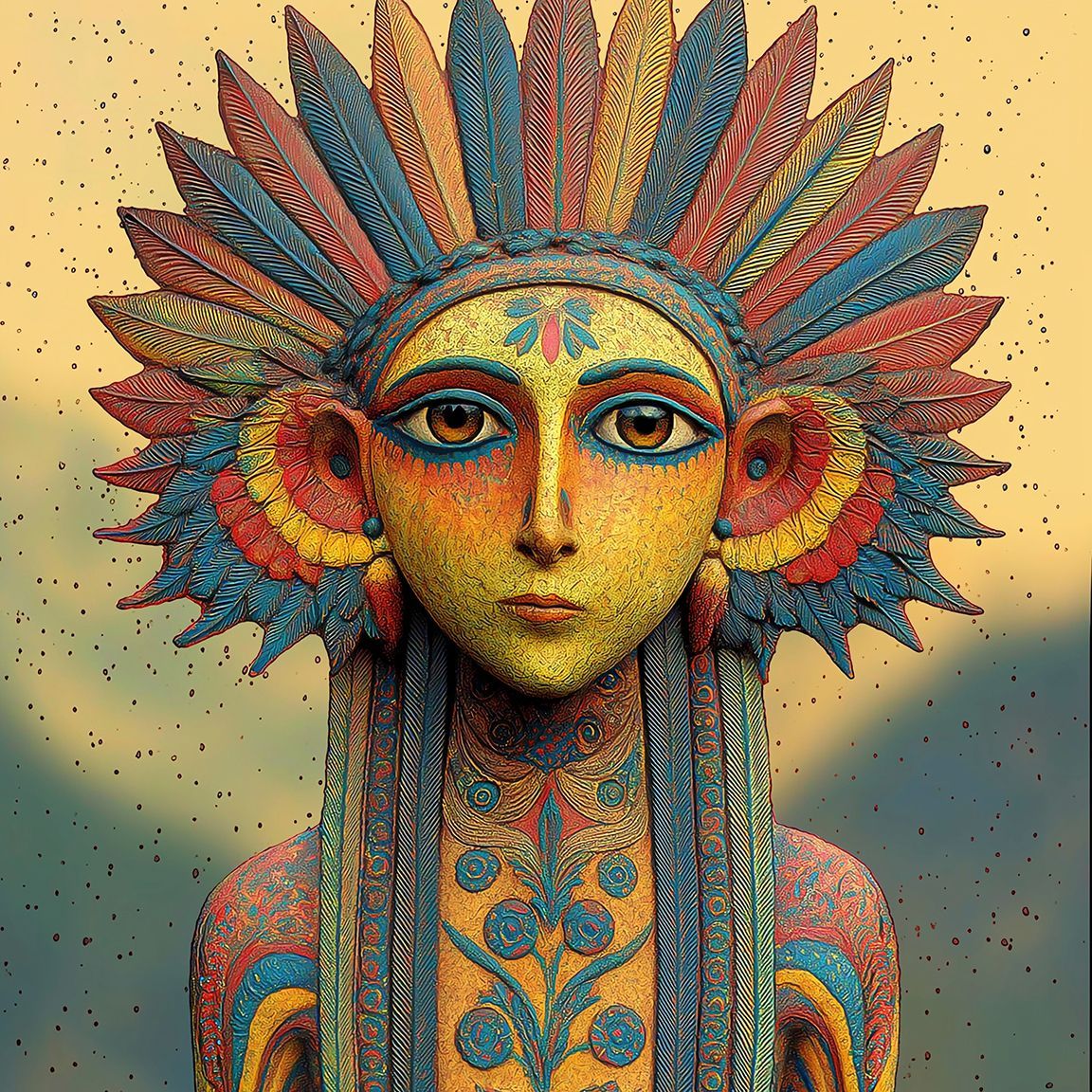
Sensarab
The Telling
As the eldest daughter of the Foremost Moval, it was not unusual for Sensarab and her brother, Hotem, to represent their Estate's Kekavil Nest at various events at Sama Cluster. Three generations of Kekavil Yakku had enjoyed amicable relations with the little Yelda. The other three nests of their Kalasek Regional Tree had their own Field Yelda clusters, the most notable of which was the Danam Cluster. It is likely that on this occasion, Kekavil Nest had been informed of the death of Majastas Zudaz-Vozev earlier that day and so ensured a high delegation was in attendance at what was otherwise a pleasantly routine occasion of a ‘Telling.’ Two things happened at this event to distinguish it from all that had gone before. The first was the innovation of reciting to affectionately distinguish the Yakku within the simple tale about the end of the Primary Epoch and the birth of the new nations. This in itself was sufficiently notable to merit a mention to their Foremost Moval mother. This gesture would open a new set of relations to address a pressing issue.
This carving was presented to Majastas Zudaz-Vanoy (Zudaz the Second) upon the occasion of Yakku Double Sensarab’s Ten Thousandth Conception in the year 323 UKC. It shows her at the age she was when she received what was then a new manifestation of the ancient Koru Healing Vats, crafted to serve the Yakku of Rho-Jashun (final chapter of Amarel Mountain). Being a Double, despite now being designated an Elder of Many Conceptions and having lived five and fifty years, she still closely resembled this image when it was presented. Eye Masters crafted the glass eyes within Kupat Queens One Living Mountain. This image, of the first Yakku Double, is now housed in the Zudaz Mantle Museum.
Lure of Two Doubles
It was clear the Foremost Moval and her unusual daughter were already aware of the new Double in Sama Cluster, the second within a single circle. Sensarab had recently manifested surprising signs following her first pregnancy, causing her new mate to leave her. Sensarab and her mother pondered this situation and determined to seek more information from the Danam Yelda, who openly declared when one of their own had such signs. They also needed assistance in using and maintaining their own Healing Vats. The fact that they employed these gifts from the Koru illustrated how far they had diverged from the Yakku Collective on Thermistal. Despite having guidance and support from Koru Doubles, many issues plagued these mysterious beings living among them. The siblings attended The Telling with express instructions to closely observe Sama-Andam, the new Double known as an accomplished Teller. Unaware of this interest, Sama-Andam obliged with her innovative gift during The Telling. This serendipitously allowed an innocuous invitation for her Circle of Eight to attend the Foremost Moval. The Yakku were circumspect about their intentions not to alarm either the Leadership Ring of Sama Cluster or certain elements within their Nest.
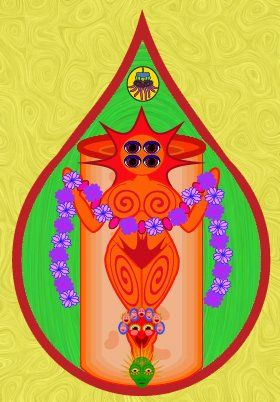
Above is the Danam Yeldic icon for all Doubles, closely based on the Venerable Koru’s original, also thought to be an icon of the first Double, Pomona-Uma.
Sensarab following and leading
The daughter of the Foremost Moval well understood all of these issues. Nevertheless, what began as compliance with her mother’s wishes quickly became an urgent need of her own. It was as if her body increasingly impelled her to chase down her ignorance and embrace her true purpose. Once the two young Doubles had impetuously offered to assist her in obtaining her own Healing Vat Egg, she was filled with a mighty purpose to see it done.
All this demonstrated her strength of will, notwithstanding the misgivings of some within her nest who clung to the ancient Yakku prohibitions. She was the first to appreciate her body fully and revealed that Tatchlan existed in all of them. Sensarab and her Foremost Moval mother embraced this novel mission to enrich their Nest and deepen their relations with the Field Yelda and the Koru Cluster-of-Clusters Nation.
Pictured here is the Koru icon of the Healing Vat egg, crafted shortly after the Pomona Nexus.
Field Yelda: Sama-Andam
This novel introduces readers to one of the Spokes of the Cluster Wheel - the Double and details the mystery of the Healing Vats’ formation.
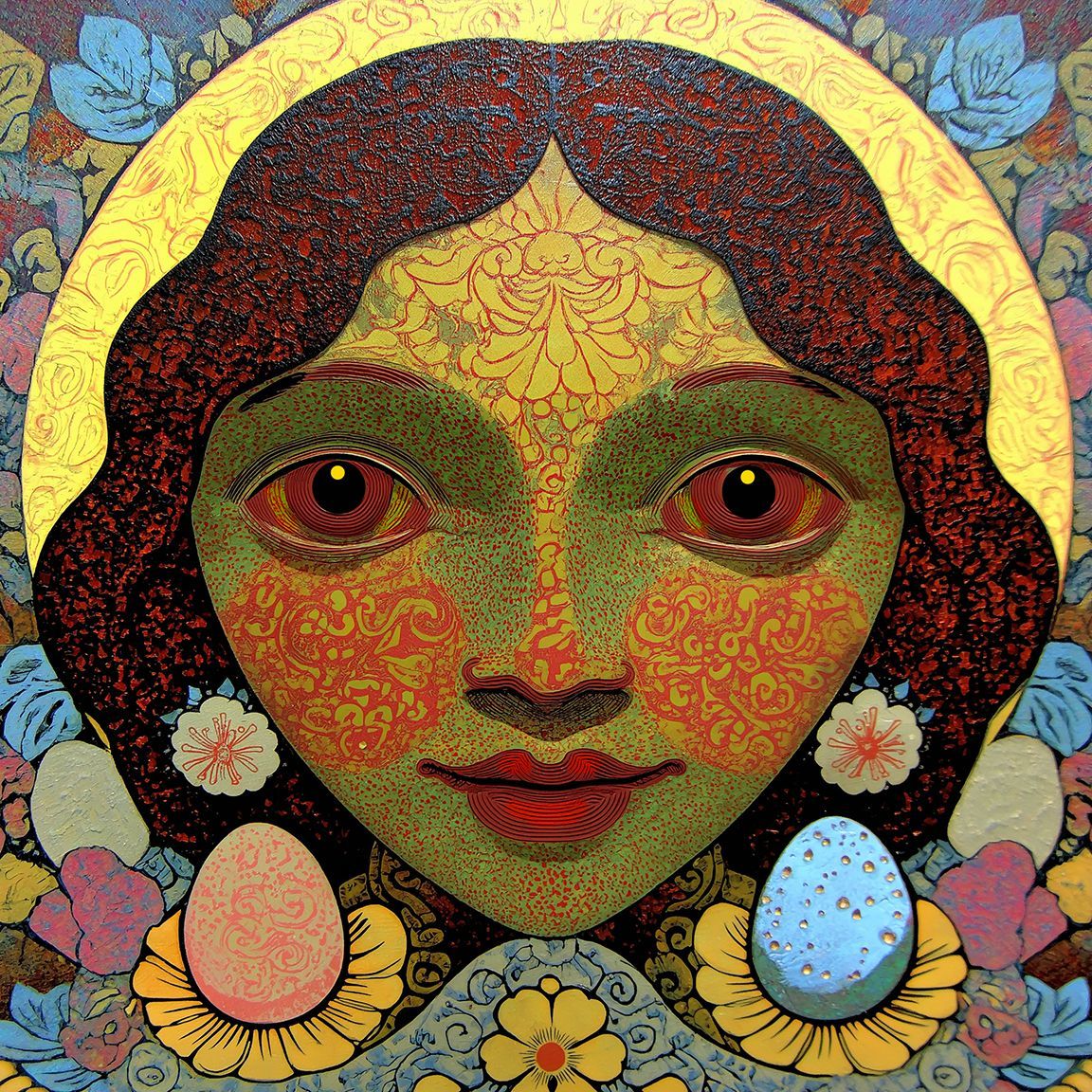
Sama-Andam
Sudden Ripe Adult
Nine days before our story begins, nineteen-year-old Sama-Andam was informed by her body that her first pregnancy would be her last. The past eight two-weeks had proven increasingly difficult before she suddenly emitted a mighty ‘Scent Wash,’ declaring to the amazement that she was a Double. Unlike all other Spokes of the Cluster Wheel, this manifestation of the Living System of Tatchlan is not manifest until a woman’s initial gestation. Immediately, she was relieved of her many difficulties as the child was swiftly absorbed into her body, which began to manifest a new potency. Sama Cluster’s Leadership Ring promptly declared her new status as a Ripe Adult, five to ten years ahead of her previous expectation of such an honour. There were two other Doubles in her Sama Cluster, composed of sixteen Circles of Eight containing one hundred and twenty-eight Ripe Adults.
This is a Field Yeldic image crafted many years after the events of this novel by a member of the Sama Cluster. It was Gifted from Sama-Andam’s Circle of Eight to the aging Yakku Double Sensarab of Kekavil Nest of Kalasek Regional Tree. It commemorates the role Sama-Andam played in ensuring the emergence of all Spokes of the Cluster Wheel, including Doubles, among the Yakku of Rho-Jashun. The two eggs symbolize the Yeldic and Yakku Healing Vat Eggs.
Spice Driver Cluster
Sama Cluster was formed immediately before the migration from several cluster fragments due to Majastas Zudaz I applying a ‘Spice Driver’ to the entire Field Yeldic population within Royran Valley ahead of their collective migration. While Maja manifests immediately in newly-formed clusters, other Spokes not present among the fragments may take generations to emerge. This fact meant the Koru Cluster-of-Clusters Nation provided these young Field Yelda clusters with the necessary Spokes to function until they had grown their full complement. Among other Spokes, Sama Cluster had been gifted with a Koru Double named Unodab when they emerged newly formed from the Royran Valley in the year 200 of the Secondary Epoch. She lived for twenty-two more years before her Conclusive Offering with the Healing Vat now bearing her name. None of the other three Field Yelda clusters surrounding the Kalasek Yakku Estate, including the Danam Cluster, had more than one Double.
Precious Fraternity
Prior to this unforeseen development, Sama-Andam, beyond being an able hand in the fields, had only distinguished herself as a gifted ‘Teller.’ She had grown up with her cluster’s ‘Elder of Ten Thousand Conceptions’ Double,
Sama-Vara, who was ninety-three at the start of this tale. She had also watched Double
Sama-Lavan, now her circle sister mate, become her cluster’s second Double eleven years ago. Sama-Lavan was twenty then, and Sama-Andam was an eight-year-old
pre-adult still living in her birth circle. Until her
scent wash, Sama-Andam had no indication she would become a member of this rare and precious fraternity. Portions of a Double’s life remained a mystery, particularly around the commencement of the formation of their lifelong companion - their
Healing Vat. The reader is privileged to witness the intimate beginnings of this wonder of the
Secondary Epoch. All subsequent meetings of Double characters within this series will have undergone this same series of rituals, laid down by the ancient
Koru Pomona-Uma, the first true Koru Double, over five hundred years ago within the
Chandara Grotto of
Mount Rongu.
Sama-Lavan
Thirty-one-year-old Sama-Lavan had been Sama Cluster’s second Double for just over one decade. As a Ripe Adult, she had almost no dealings with Sama-Andam, a pre-adult living in a different circle. Were it not for the girl's notable talent at performing several ‘Tellings,’ she would not have known her. Nine days before the death of Majastas Zudaz I and the beginning of our story, this nineteen-year-old girl surprised everyone, including Sama-Lavan, by producing the unmistakable ‘Double Scent Wash’ at the end of a troubled pregnancy. Sama's Leadership Ring gathered to ponder this unprecedented situation and determined that the two younger Doubles must occupy the one circle unencumbered with pre-adults. The second woman of Sama-Lavan’s Circle of Eight was gently Scent Separated from them and placed in another circle. At the same time, the suddenly Ripe Adult Sama-Andam arrived on the characteristic waves of pleasure accompanying a Scent Integration into her new Circle of Eight. Sama-Yava, the circle’s Maja, bathed their circle in euphoric aromas to ensure a firm bond was formed within this new configuration. Sama-Lavan was called to the Leadership Ring on several occasions over nine days. One member of the Ring was Elder of Ten Thousand Conceptions Sama-Vara. They already had a close relationship as the cluster’s two Doubles, and now conferred on the upcoming sequence of events for this new Double.
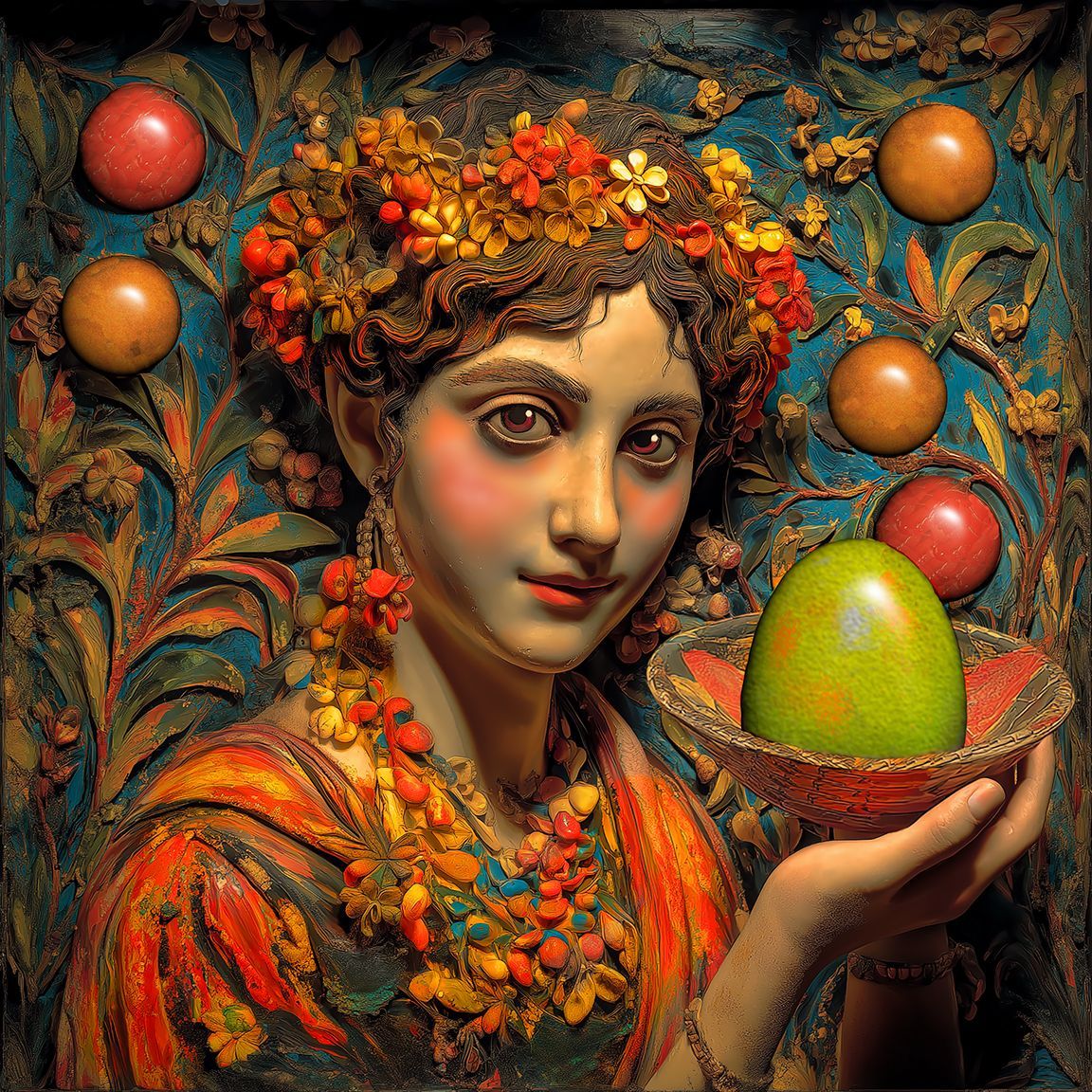
As our tale progresses, Sama-Lavan learned that this new Double, in some ways, exceeds her. Sama-Andam displayed admirable agility in adapting to her utterly unexpected situation. She readily cultivated deep releases from blood offerings and met the astonishing culmination of her Healing Vat Egg’s opening with better grace than Sama-Lavan had. At the same time, despite being officially a Ripe Adult in her cluster's eyes, she still retained the shallowness of youth and required ongoing guidance. However, in the short space of these events, Sama-Andam deepened within her new life, including being seated before Foremost Moval Viperfer and her Yakku Double daughter Sensarab. By the time of this conference, Sama-Lavan found her to be an equal partner of similar mind to the unprecedented matter at hand - taking on the unheard-of role of guiding a Yakku Double in securing her own Healing Vat Egg.
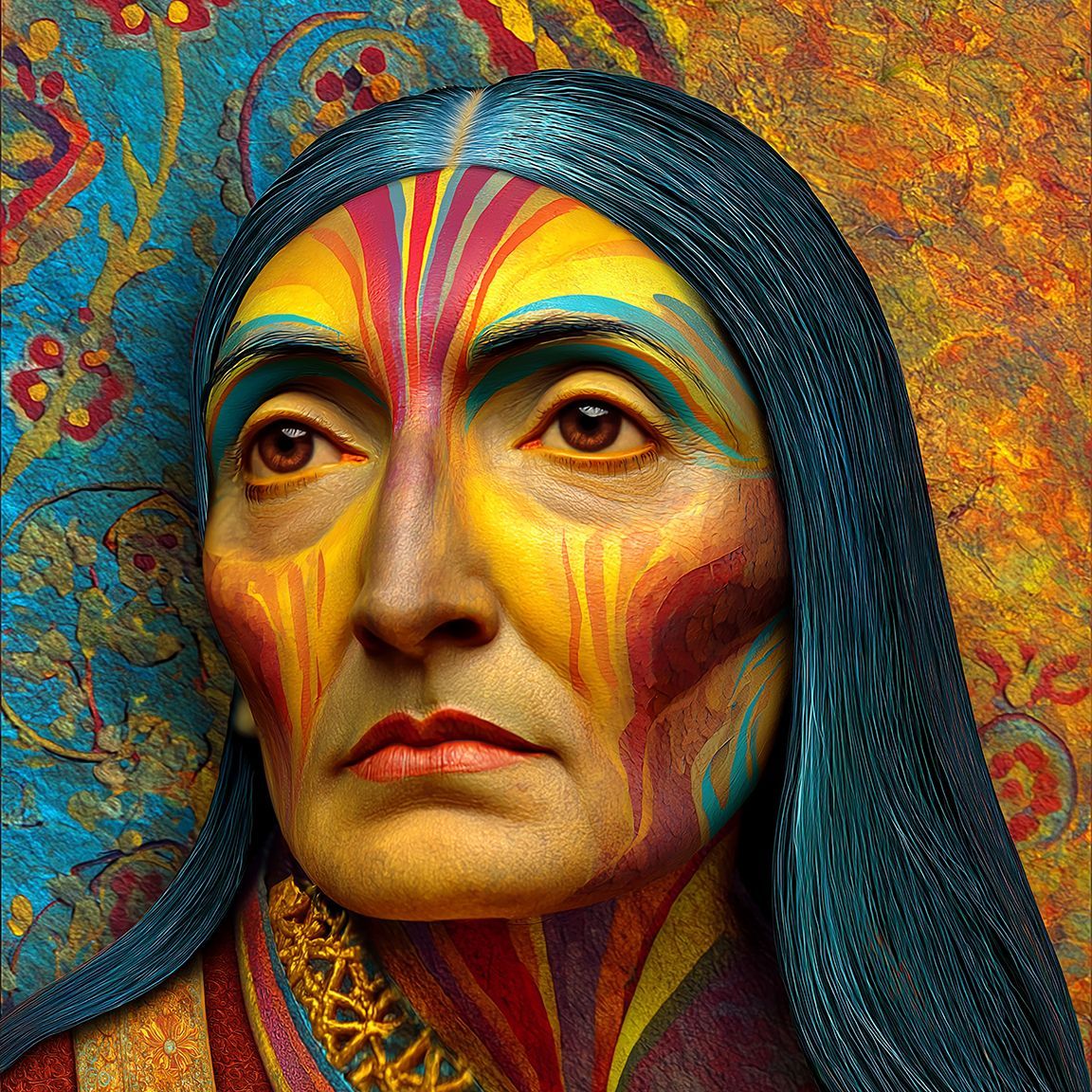
Sama-Vara
Fragments form a new cluster
It is no exaggeration to say Sama-Vara’s life contains the entire history of the Sama Cluster. Born into a different cluster within the Royran Valley of the Mulungu Mountains of Rho-Jashun, young Vara witnessed her circle join two others in a fragment, Separating from her birth cluster when she was seven. They joined four other fragments to fashion the new Sama Cluster of the First Grade, being eight Circles of Eight containing sixty-four Ripe Adults.
This was all part of the Generational Plan of Majastas Zudaz I, through a powerful ‘Spice Driver’ fashioned within the depths of Tatchlan. Later in that same year of 200 UKC, Sama Cluster launched itself, with all other Field Yelda, out towards ‘The Boundless Marachla Plain.’ They were met just beyond the twin mountains of Mengung and Phorie by a mighty company of Sumudin, forming a colossal five-anda arc just beyond the gap between the two ‘Pillars of Royran.’ Among them were the ancestors of the Yuna Cluster’s Circle of Eight, now including Yuna-Monu. At the time, all Sumudin Clusters of the Fourth Grade (thirty-two circles) or higher living in the central and southern range of the Mulungus presented one Circle of Eight for such service as Paramount Contacts between the Koru Cluster-of-Clusters Nation and the emergent Field Yelda clusters.
Epic migration across the Marachla
Each Field Yeldic circle was matched with a Sumudin circle, so Sama was guided to meet Yuna. Attending these Sumudin were numerous Koru and Koru Yelda Spokes of the Cluster Wheel, intended to augment any recently formed cluster possessing a partial complement. While the new Sama Cluster was composed of eight complete circles, meaning they already had eight Maja, they lacked several Spokes common in older clusters. One of these required Spokes was a Double. A mature Ripe Adult Koru named Unodab stood ready to join the Sama Cluster. Under the watchful eye of Yuna Cluster, these Spokes underwent a swift Scent Integration into their new clusters. This was of particular importance to Double Unodab as she required this initial contact with all the cluster males to begin building the foundation for her Double service. Once Sama Cluster was thus enlivened and fortified, Yuna’s designated Circle of Eight accompanied them along well-paved routes toward their assigned home. Three other new clusters, one being the first manifestation of what would later be the famed Danam Cluster, also followed the same route. After an extended trek west and south, they arrived at a mature stand of mighty Mernet and other Yakku flora known as Kalasek Estate. This was composed of four Nests. Yakku representatives of the one introduced to the Sama Cluster were from Kekavil Nest. The other three Field Yeldic clusters were led by representatives of the other three Nests bordering different sides of the Estate.
Agricultural tools and rites
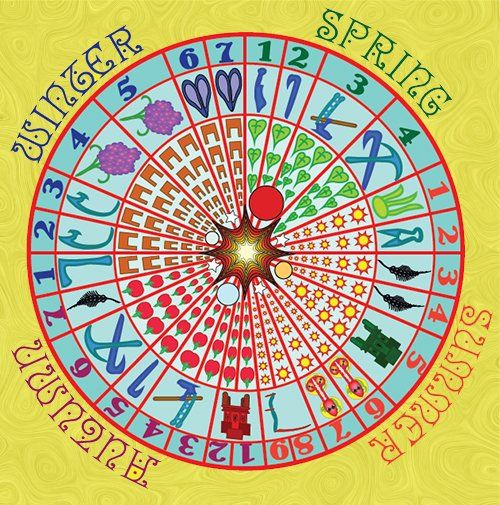
This historic migration and establishment formed the backdrop of Sama-Vara’s childhood. Once settled, she joined her circle and cluster in putting the land in order and beginning the time-honoured traditions of agriculture, as practiced on the same spot by uncountable generations of Tolku during the Lesser and Greater Era of the Primary Epoch. The Sumudin bestowed upon this new Rural Cluster the first generation of Patzku and other pastoral animals to serve in their many rural endeavours.
Due to their northern location, Salarish was provided as their primary crop. Of equal importance, the Sumudin ensured vital Baby Mother and other Lesser Era agricultural traditions were fully linked to seasonal activities. Pictured here is an interpretation of the Salarish Agricultural Calendar. Such devices would be mounted on public walls with a great pointer fixed to the centre with an arrow moved to indicate the current two-week for each season. This simple device governed much of the activities of the Sama Cluster.
Double Sama-Vara
In 210 UKC, when Fresh Adult Sama-Vara was seventeen, she had her Scent Wash, making her Sama Cluster’s second Double. Koru Double Unodab guided her through nurturing and hatching her Healing Vat Egg and set her on the Ripe Adult Double path. They continued together for twelve more years until Unodab’s death and Conclusive Offering in 222 UKC. Fifty-three years later, in 275 UKC, Sama-Lavan had her own Scent Wash, and Sama-Vara, now an eighty-two-year-old Elder of Ten Thousand Conceptions and a strong voice within Sama Cluster’s Leadership Ring, joyfully fulfilled her duties to the new Double.
Sama-Vara and Sama-Lavan were both astonished when the pre-adult Sama-Andam manifested as Sama’s third Double a few days before the shockingly early death of Majastas Zudaz I, who had presided over the world Sama Cluster inhabited. While she delighted in now witnessing her third opening of a Healing Vat Egg, the rigours of the ceremony were too taxing for her. Beyond all this, the now ninety-three-year-old Elder, who had witnessed the death of all her generation, with their numerous dramas, joys and tragedies, now embarked on the most extraordinary chapter in Sama Cluster’s history.
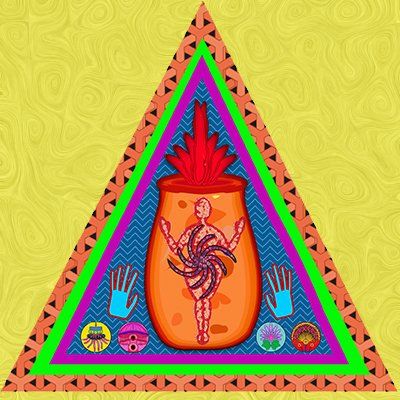
Being an Elder, she was slow to embrace novelty and so met with profound skepticism the two young Double’s initiative to aide Sensarab, an unheard-of Yakku Double. Despite this, in their well-constructed proposal, she was favourably impressed at the intelligence and maturity of Sama-Lavan and even Sama-Andam. Her days ended shortly thereafter peacefully, and we all witnessed her Conclusive Offering to her Healing Vat. Pictured here is the ancient Koru icon, crafted shortly after the Conclusive Offering of Pomona-Unna, of this merging of a Double with her Healing Vat.
Background
Primary Epoch
One Hundred and Twenty Aeons
An Aeon is a unit of 25,000 years. With the discovery of the Final Tolku Proclamation, what is now known as the ‘Greater Era’ of the Primary Epoch stands close to one hundred and twenty Aeons. This Greater Era designation is for the period commencing at the end of the first novel of the series. At this time, the Cluster-of-Cluster’s Nation of the Tolku was established across Anu. The ‘Lesser Era’ or ‘pre-Tatchlan period’ has even less definitive documentation concerning dates and events. With few exceptions, when the term Primary Epoch is used, it is understood that the Greater Era is under discussion.
Domesticated Suvuka
With the emergence of the first Majastas in history, Thakadush-Satwa, a programme began to domesticate the Tolku’s former enemy - the Suvuka. History records that the first Majastas beloved early companion, Operant Shuna-Shapta, had a brother, Shuna-Vurupta, who became involved in the commencement of this mastering program. The result was the Suvuka Domestication Ministry (official icon shown here), responsible for the ultimate breeding of over five hundred varieties of tame Suvuka, ranging from tiny to those large enough to bear weight and draw a cart. They continued as faithful companions to their Tolku for the remainder of the Primary Epoch. It appears most, if not all, fell with their Masters with the Killing Swath. The raw Suvuka cruelly destroyed those who did not perish during their Second Onslaught. All of this seems strangely forgotten by the Guardians in their Sanctuaries during The Interim. The concept of the Suvuka being domesticated was absent from popular memory until a volume was discovered in the Kodrapum Grotto in Mount Arnom. This location was made famous by the discovery of the Final Tolku Proclamation. Subsequent research and the eventual recovery of numerous artworks illustrating these domestic varieties confirmed this now-shocking truth.
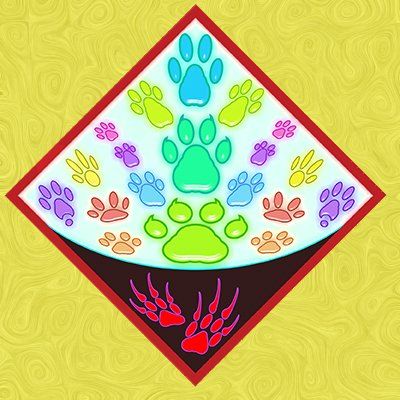
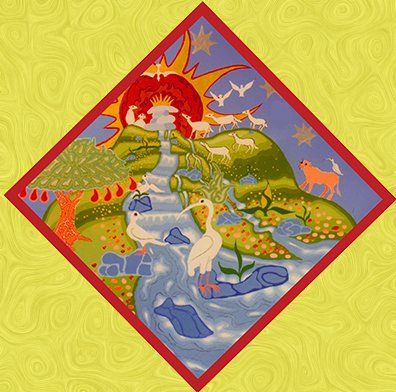
Blossom becomes Burning
Early in the Greater Era, Anu’s sun, Nu, manifested cycles of increasing brilliance. At one point in the first novel, Hesha Vira’s Challenge, Captain Emedin remarks to her first officer, Dine, about how resplendent Nu appeared and relates a story about an earlier captain commenting on the benefits he had from exposing himself to this phenomenon. What readers saw there was one of the earliest manifestations of what will, in subsequent ages, be called the ‘Blossom.’
It earned this title because, with each return, the cycles increased in power and produced many benefits, which came to be called ‘Benisons.’ The Blossom caused the enrichment of flora and fauna, including the Tolku. This rare event came to be eagerly anticipated, and many festivals and ceremonies were enacted during these cycles. It even led to improvements to the entire Tatchlan System.
The increasing power of these cycles turned deadly at the beginning of the Sixtieth set of Aeons. What will come to be known as ‘The Burning Blossom’ will receive far more detailed treatment in the fourth novel of this series. Its importance to this story lies in the catastrophic error of opening up the Living System of Tatchlan during these early cycles. While initially beneficial, the Blossom became harmful.
This led to subtle and increasingly damaging results before Tatchlan was entirely shut to what was now called the ‘Baleful Eye of Nu.’ It is known that this took place within Aeon Sixty-Two. By then, the damage had been done, and the second half of the Greater Era was increasingly devoted to attempting to repair this unwitting injury to the most precious Living System of Tatchlan.
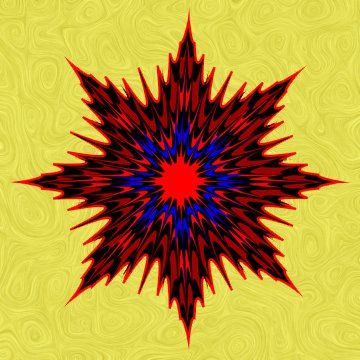
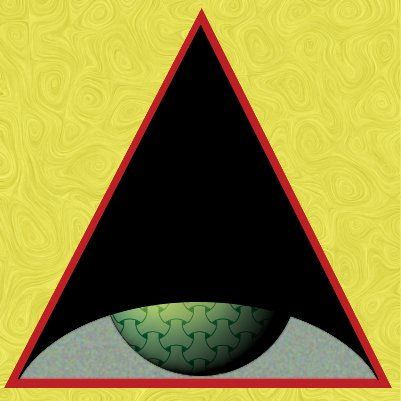
Killing Swath
This cataclysmic event is the sharp demarcation point separating the Primary Epoch and the world of the Tolku from the Secondary Epoch with its Koru, Yakku and Yelda. Deep research conducted long after the generation depicted in this novel has revealed the following summary.
“The Killing Swath begins on Two-Week One, Atra, the Flame on Foremost Day One, ending the previous series of Primary Epoch Calendars totalling 2,995,676 years and commencing the period known as The Interim. Survivor accounts tell of small pockets of violence encircled by masses dying in their sleep. This gradual process continued to Two-Week Six or Seven throughout Rho-Jashun, Statos-Vey and Thermistal. Witnesses agreed that by Two-Week Eleven, Unna, The Mountain, all Killing Swath activity had ceased.”
Chapter Nine, Hathnaivas-Pava Chronicles
‘The Warming of Cold Understandings’
Yiz-Vayaj Collection (current edition)
While the term ‘Killing Swath’ is of unknown origin, there is clear evidence of its general use by the First Generation of Guardians during the opening century of The Interim. This benighted population is also viewed as among the last generations of Tolku, who, by the Second Generation, began to note their offspring beginning to undergo ‘The Change’ into the Koru and Yakku. What is revealed in this novel is the proper name of this event, The Rectification, and the profound renouncement it represents. Readers are told that during the second half of the Greater Era of the Primary Epoch, an extensive series of ‘Corrections’ were undertaken within the Living System to ameliorate increasing incidences of cascading errors within Tatchlan. While modest versions of such Corrections had always taken place, The Resplendent Work is an immense and dynamic entity on occasion requiring assistance to function fully. What was now enacted were desperate measures to shore up and repair great rends within the Living System. In time, these massive projects became known as ‘Generational Plans’ and, finally, ‘Epochal Generational Plans,’ all dedicated to forestalling the last extreme measure.
Notwithstanding these efforts, it was finally determined that the only way to save the Living System of Tatchlan was to arrest all functions and force it to sink beneath all awareness before waking and rising again. According to what is now known as the ‘Final Tolku Proclamation,’ discovered during this novel, this radical solution was termed the ‘Rectification.’ This proclamation leads to a review of all existing literature from later in the Primary Epoch. Such efforts uncovered many things, including the previously misunderstood meaning of another term, the ‘Ultimate Panacea,’ also referring to this terrible solution. Such an operation would cause Tatchlan to fold in on itself beneath its foundation, known as ‘The General Plain,’ before it emerged and commenced rebuilding. Such a profound undertaking would unavoidably lead to the near extinction of the Tolku and most, if not all, of the physical manifestations of the Tatchlan System on the Skin of Anu.
While not explicitly stated, this ‘final’ proclamation (there are no other copies of this same document, and it appears no previous editions of this series survive) makes clear that all of this was, to some degree, made known to the entire Cluster-of-Cluster’s Nation. By the time of the Final Proclamation’s issuing, it is evident that this culminating charter was greeted with resigned acceptance. Among other extraordinary initiatives, the entire city of Bhampay was buried to ensure the survival of the Amarel Mountain site and its enigmatic contents. The implications of these events and the clear evidence of the general population’s participation in the concluding actions of their lives and everything they knew for the sake of Tatchlan would not be lost on their heirs. The Koru and Yelda would reverence ‘The Foremost Ones’ for their nobility and sacrifice for Tatchlan. They dedicated all their efforts to rebuild the Living System to the Tolku’s honour. Initially, the Yakku refused to accept this narrative and clung to their own, suggesting the Swath was a catastrophic mistake based on Tolku's hubris. They would not tolerate the notion of an entire civilization voluntarily extinguishing themselves for the sake of a system they viewed as evil. At the time of this second novel, this belief formed the foundation of the many anti-Tatchlan movements within the Yakku Collective of Thermistal, leading to the creed within the Siv-Sa religion declaring such teachings represented an ‘Abhorrent Doctrine.’
Long before the time of this tale, a discovery was made deep in the folds of The General Plain by the first generations of Koru Operants. They would come to be known as the ‘Breathing Seals Conglomerations.’ The first Koru Majastas, Zudaz I, and Her successor, Majastas Zudaz II, would ponder these enigmatic living documents.
These were the intended modes of communication between the last Majastas of the Primary Epoch and their Majastas heirs of the Secondary Epoch on the Rectification mechanisms and many other profound matters. While the general population grew into ‘National Maturity’ regarding such abstruse Primary Epoch legacies as The Treasuries, we may dare say a similar process of greater depth was required by the first dynasty of Koru Majastas to comprehend the contents of these Conglomerations fully.
The Interim
Dramatic interval between the Epochs
This seven-hundred-and-forty-one-year period separates the end of The Primary Epoch from the beginning of The Secondary Epoch. This Amarel Mountain novel begins in Two Hundred and Eighty-Six of The Secondary Epoch. Despite the time that has passed, The Interim exerts significant influence over our characters' daily lives. The Interim commences within a landscape devastated by the receding Killing Swath.
“It is estimated over ninety-eight percent of the entire Tolku population have died. Survivor accounts mention widespread death among Tatchlan creatures and other forms of life. All surviving Living Instruments were gathered before being carried to the Sanctuaries.”
Chapter Nine, Hathnaivas-Pava Chronicles
‘The Warming of Cold Understandings’
Yiz-Vayaj Collection (current edition)
Guardians
While this term was found within what is now known as the Final Tolku Proclamation, while much was lost, this original title was retained by the survivors of the Killing Swath. Those rising from the conflagration called each other by this name on Statos-Vey and Rho-Jashun as they began the slow and painful process of migrating to what they knew to be the Sanctuaries. These Guardians possessed the desire to survive and a sense of mission. Their task was nothing less than saving the Tatchlan System from oblivion. To this end, they endeavoured to gather what they could to bring to the Sanctuaries. Initially, their only obstacle was the ruin of their former civilization. Still, by the time of the Fourth Generation, the Second Suvuka Onslaught made this ongoing collection of Living System Elements and Primary Epoch Attainments fraught with peril. Within the Sanctuaries, they nurtured these treasures as they regrew the Spokes of the Cluster Wheel and then the first Invocates and Operants to begin wakening all of Tatchlan. Their final goal was to lay the generational foundations for growing a new Majastas. As they trod this noble path, an unexpected transformation occurred, leading to their children becoming Koru.
Amassment and Treasuries
What became known as this same Fourth Generation rediscovered the Mount Midin Amassment in the year Ninety-Seven of The Interim. This vast repository of Primary Epoch scholarship was preserved and studied for the next one hundred and forty years. The ‘Pauloman Grotto,’ named after the primary cluster devoted to this service, became the hub for research and ongoing work to reproduce critical texts on the verge of disintegrating due to the extended neglect after The Killing Swath. All this ended when the Suvuka managed to break into the Amassment, killing 2,557 Koru and destroying the contents of the most-ancient library and most of the summaries, research, and reproductions of the Pauloman Cluster. An unlikely remnant from this collection, the ‘Everlasting Ennui,’ happened to be removed from the site at the time. Another survivor was the ‘Pauloman Catalogues,’ which had assisted the new generations of Koru Venerable Scholars and Esteemed Librarians in making requests, now serving as an agonizing list of all lost. The first of the two icons above represents this tragedy, with fire blossoming out of pages defiled by Suvuka paw prints.
The First Generation discovered the first three Treasuries long before they entered the Sanctuaries. Before the Central Triumvirate was established, the three Sanctuary Mountains, Rongu, Arnom and Chraxan, revealed this mysterious construction deep within their survival chambers. These Treasuries were found to contain hundreds upon hundreds of sealed crates. When these were opened, perfectly preserved volumes were revealed. Twenty-nine additional Treasuries would eventually be discovered throughout the central Mulungu Mountain range. The last generations of Tolku made these initial three discoveries before The Change. Despite being only a few generations away from the Primary Epoch, it is now apparent that much conceptual sophistication had yet to be recovered. While the value of some material was immediately apparent, the profound richness and depth represented by most of this strange collection of volumes proved beyond these Fresh Koru of The Interim’s ability to comprehend. At the time of this novel, nearly one thousand years later, the first glimmerings of what would come to be known as the ‘National Maturity’ were becoming manifest. This was due partly to two discoveries made during this book’s fleeting timeline, the ‘Final Tolku Proclamation’ and the uncovering of Amarel Mountain at the Bhampay site. The second of the two above icons shows three stone books with cavities carved out as Ketukku insects, as the Treasury chambers are.
The Koru
The above quotation in the Hathnaivas-Pava Chronicles refers to the ‘Sanctuaries.’ Detailed preparations were made prior to The Rectification for the disposition of the survivors. References are made to directional signage, apparently widely distributed across Anu, although what form this took is unknown.
These markers guided the remaining population to migrate to one of three mountains in the southern Mulungu Mountain chain of Rho-Jashun. The first and primary Sanctuary was Mount Chraxan. The two attending mountains were Mount Rongu and Arnom (Mount Arnom would become known as the famed home of Kodrapum Grotto, the resting place of the Final Tolku Proclamation). These three mountains would later form the core of the new nation and were named the ‘Central Triumvirate.’
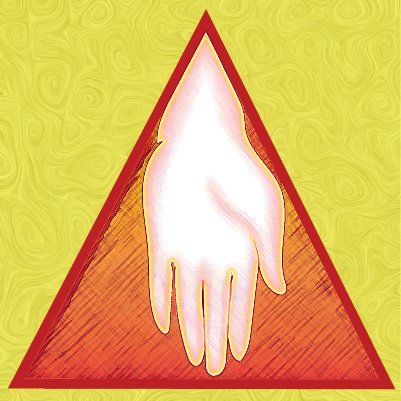
Due to the chaos of the times, several conventions developed, characterizing events of this period within clear boundaries. One of these involves what is known as the ‘Four Generations.’ Traditions have it that the refugees came in three well-defined waves or ‘generations,’ separated by several decades. The First Generation arrived within the first ten years of The Interim. They were said to have the most resources, and a famous emblem for them was a ship, suggesting many could sail to their destination. The surviving land and coastal notices guided them to Mount Chraxan, where they found chambers, a network of connecting tunnels, and supplies prepared for them.
The Second Generation reached Mount Chraxan roughly forty years later from the combined migrations of refugees across the ruined continents. Their emblem was a cart, indicating they had fewer resources than the First Generation. By this time, all three Sanctuaries had been fully explored and opened. Thirty years after this, a Third Generation appeared in a long wave. Their emblem was a pair of footprints, clearly indicating their desperate situation. Between these more significant diaspora surges, smaller ones also made it to safety, although they are now characterized as belonging to one of these three primary populations. The first three Treasuries, and later the Mount Midin Amassment, were discovered during this early and desperate period. They were not explored until later in Interim history. That series of tragic, mysterious, and enlightening discoveries is detailed here.
The Second Suvuka Onslaught on Rho-Jashun
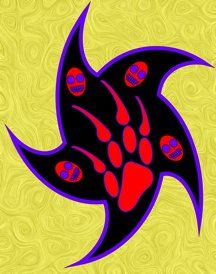
In the Eighty-Fifth year of The Interim, the first landings of Suvuka crossing the Panchala Sea at the Huallapandu Headlands in Northern Rho-Jashun were reported by some of the last survivors of the ‘Third Generation’ of refugees fleeing south to the Sanctuaries. Two years later, in the Year Eighty-Seven, they had sufficiently massed their forces to spread across the Marachla Plain in their Second Onslaught.
As detailed below and elsewhere, this invasion had been forestalled by the unexpected opposition of the Yakku on Thermistal. Were it not for this extended delay, they might have landed in Rho-Jashun twenty to forty years earlier, destroying the entire Third Generation and cutting short the Second Generation’s successful arrival in the Sanctuaries. It was into this world that the Forth Generation came. Unlike the previous three generations, they were not migrants but were born within the Sanctuaries.
They began to attain Ripe Adulthood in the tenth Year of the Suvuka’s filling the Marachla Plain and are lauded as heroes for braving the bestial herds to retrieve whatever ‘Living System Elements’ and ‘Primary Epoch Attainments’ they could to assist in rebuilding a new Cluster-of-Clusters Nation. Despite their hardships, these populations retained knowledge and reawakened skills to employ Tatchlan servants such as the Varku and Krall to assist them in this dangerous work. Along with what the first three generations managed to bring with them, this Forth Generation is known for risking their lives to specifically seek out and rescue what is now called the ‘Recovered Ones.’ These included various living beings refined and improved by Tatchlan during the previous Primary Epoch. This collection of treasured entities would eventually be grouped into three categories: Converted, Modified and Innovated.
The Tolku to Koru Change
While the Suvuka busied themselves in erasing the patrimony of the Tolku on Rho-Jashun and Statos-Vey, these Guardian populations within the Sanctuaries strove to meet another challenge. In the Year Eighty-Nine of The Interim, the first recorded use of the term ‘The Change’ was preserved. The reality long preceded this document, initially noted late in the First Generation’s progeny and continuing to manifest through the Second Generation.
The Guardians began to observe their children having a more robust build than themselves. Their hands grew large and square, and their eyes retained large proportions to the rest of their faces into Ripe Adulthood. They also appeared to have a growing aversion to Nu and the daytime hours. The term ‘Upper Abyss’ also originates in this early period, indicating that the Koru aversion for the open day sky was already pronounced.
A Fresh Adult of the Fourth Generation was taller than the original Tolku of the First Generation and nearly twice as wide at their shoulders. This Forth Generation also began seeing the entire population shift gradually from a diurnal to a nocturnal existence. At some point during this courageous Forth Generation’s activities, the term ‘Koru’ appears to have, by popular acclamation, become the new name these populations gave themselves. The origins of this term have never been determined.
While much had been foreseen and prepared for, there is no indication of any foreknowledge of these startling developments. Despite the First Generation being direct witnesses of the preparations before the advent of The Killing Swath, there is a puzzling lack of informed discourse surrounding many aspects of their situation. This is well illustrated by using the term ‘Killing Swath’ instead of the one clearly in circulation before the event, ‘The Rectification.’ In time, The Change was included in many other alterations known as ‘Swath Changes’ and seen as an extended impact of The Killing Swath on the survivors and their descendants. Following a period of confusion concerning these alterations, there appears to be an acceptance and welcoming of this transformation as a representation of their new beginnings in a new epoch.
A brief note about the Koru icon for the Change featured above: all Koru icons are within what is known as a ‘mountain’ or ‘pyramid’ border. This signifies their nocturnal, underground life. The other elements, as all Koru icons, are to be read from the top going down. At the top is an image meant to be interpreted as the depleted life of the last Tolku. What grows and blossoms out of the bottom is meant to signify the new and vital life of the Koru.
Early Invocates and Operants
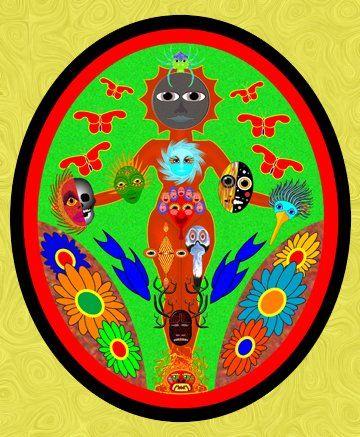
Against this already fraught backdrop of Suvuka threats without radical changes within the Sanctuaries, the Guardians successfully utilized the recovered Living Instruments and other ‘Living System Elements’ to grow a new generation of Invocates and Operants able to enter the Living System. Initially, there was much confusion due to the radically changed landscape they encountered there.
Surviving documentation painted a very different picture of what these new Invocates encountered within Tatchlan, and a great deal of effort was expended in navigating this altered terrain. They found a surprising ally in the Principal Face of Hesha Vira. Unlike the other Principal Faces, the Face of Raw Life was animate and swiftly responded to their invocations. It is now understood that by the design of both the most-ancient Tatchlan Masters and Tolku Majastas, a deep connection existed between Hesha Vira and the Suvuka. They worshipped her and thus sustained her through the seven long centuries of The Interim.
On the Skin of Anu, the Koru experienced an unprecedented surge in the number of Invocates who displayed the supreme manifestation of their craft - Operants. At no other time in recorded history of the Primary or the Secondary Epoch has such a large population of Operants been consistently sent into Tatchlan from the Fourth Generation onwards. These Operants, able to enter Tatchlan without recourse to a Living Instrument, successfully awakened all of the slumbering Principal Faces and, with their assistance, set about to reestablish full functionality between themselves and the Invocates within The Resplendent Work. It is known that the Principal Face of Humma, the Face of Recollection, conducted them to where the Breathing Seals Conglomerations were established. The Operants found they lacked sufficient depth to comprehend their multitude of messages. This was left to the coming Majastas dynasties.
Healing Vats innovation
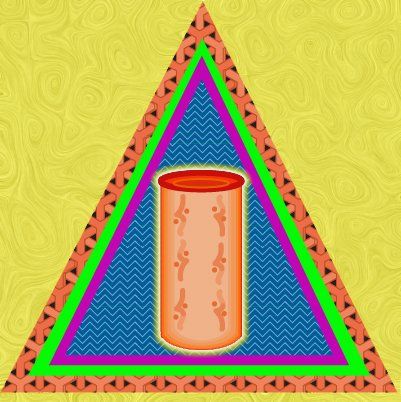
Even living with the ever-present Suvuka threat, the adaptations to now being Koru instead of Tolku, and their prodigious efforts both on the Skin of Anu and within Tatchlan, the first of the two most significant works of the Koru still needed to be accomplished. One seemingly humble member of the Recovered Ones was an entity known to the Tolku as ‘Healing Jelly.’
This topical application was used for various skin ailments for most of the Primary Epoch. It had been improved within Tatchlan on numerous occasions throughout the Greater Era. It is revealed to have undergone one of the more dramatic examples of a ‘Swath Change.’ The Jelly had been primarily gathered by the First Generation, who, of necessity, broke with the Tolku prohibition of storing more than small quantities in pots to transport them to the Sanctuaries efficiently.
During the Primary Epoch, they were always kept in small jars as significant quantities tended to alter, ceasing to be of service. Initially, once settled in the Sanctuaries, the smaller-portion conventions were observed. Nevertheless, the First Generation of Guardians noted that when four jars were accidentally combined, the Jelly withstood these unprecedented concentrations, continuing to render timely ministrations to the significant number of injuries incurred among the refugees. Over time, these more abundant quantities displayed additional alterations. Most important was an increased display of the undeniable characteristics of a collective entity. It was further discovered through painstaking experimentation that prodigious concentrations in long containers seemed to optimize these new abilities. The Danam Yelda are now more willing to laud the Venerable Koru for playing a more active role in this initial development than the Koru themselves.
In the year five hundred and ninety-seven of The Interim (one hundred and forty-four years before the arrival of the first Koru Majastas), within Chandara Grotto of Mount Rongu, a confluence of extraordinary events and an unusual concentration of Genius led to the fashioning of the first Healing Vat. This breakthrough was primarily due to the introduction of two unlikely elements. One was known as Phantasm Spume; this arrived fresh from an eruption to the north that same year. While the many Vision Window and other healing qualities were well documented in the Primary Epoch, no new supply existed during The Interim. In its raw liquid state, it is lethal, but once dried and refined, it becomes a revitalizing agent for many ills and a general boon to all living beings, including those perfected by Tatchlan. The other was the eventual introduction of a tiny creature, the Takshakutan, long known for its ability to transmute toxins into medicines.
Most of the final work unfolded within a single generation among four clusters within this ancient cave. Chief among these was the Pomona Cluster. Honoured Historians would later conclude that this event was part of a larger ripening of the Koru towards the production of their first Majastas. Among other notable aspects of this unique period is that the intensive collaboration of Invocates, Operants and Doubles achieved this.
The Yakku
Due to the turbulent nature of these events, leading to several overlapping changes, the following summaries are not in strict chronological order.
Mystery of remaining
This same anarchic period of the Killing Swath, followed by The Interim, saw a very different epic unfold to the north across the Panchala Sea on the continent of Thermistal. There, as best as can be determined, the Tolku Cluster-of-Clusters Nation also dissolved with only a tiny fraction surviving. Gradually, this population moved west, picking their painful way through the general ruin. It is presumed they followed similar signage to those to the south, but instead of most boarding the ships along the southern coast to journey to the Sanctuaries, the majority chose a different path. Honoured Historians now explain this decision as based on several factors. One compelling reason came quickly behind them.
At the same time the First Generation of Guardians on Rho-Jashun had discovered and opened the three mountains, the refugees on Thermistal found themselves in mortal danger. An incomplete account clearly states that in what would be later known as the Year Nine of The Interim, the raw Suvuka, long kept on the eastern shores of the Vettencore Passage, scaled the sheer walls, braved the strong current of the waters, and broke through the most-ancient barriers. They then began to rampage west across the continent. The Tolku somehow learned of this deadly tide despite the distance between the two groups. While a few made their way to the southern coast and set sail for Rho-Jashun, most raced towards the Lake Teval Basin and the Silvasora Mountains. Fragmentary evidence suggests they found a collection of survivors still living around the Grand Lake Teval, where most of the population had been before the Swath. With the eastern arrivals and their news, all the remaining Tolku resolved to flee to the west through the Silvasora Mountains in the Year Eleven of The Interim. Beyond these mountain passes lay the vast Viracocha forests, surrounding the westernmost mountain range of Thermistal of the same name.
Within these mighty Viracocha forests, they were surprised to find an organized body of Tolku, who survived in sufficient numbers to retain some semblance of order. Most were members of the Viracocha District Flora Ministry. While significantly reduced in numbers, this was the only governance body to persist after the Swath. This ministry retained its knowledge and resources and was able to assist the refugees beyond all hope. Long before the Killing Swath, these ministry members had established offices and residences high in these vast canopies as part of their ongoing service. They swiftly conducted most of these desperate thousands arriving on their borders into the trees before the Suvuka overtook them. In the brief interval before the Suvuka came, they healed their wounds and prepared them for battle. Generational knowledge of their complex environment was utilized to meet brute force. As a result of these extraordinary actions, the hordes arriving in the Year Fourteen of The Interim were unprepared for an organized arboreal army with deadly weapons on the edge of these forests. For the first time, their seemingly unstoppable Second Onslaught was stalled.
Paramount Barrier
Notwithstanding the many strategies, fighting tactics, and what would later be revealed as incredible innovations the first generations of Yakku employed against the Suvuka, it was still possible, by sheer determination and numbers, that the beasts would have eventually overcome all defences. It was known that the population of Suvuka was growing out on the Lake Teval Basin. Despite heavy losses, there appeared to be no diminishment in their determination to wipe out all Tolku and their heirs. This all changed in the Year thirty-four of The Interim when some tens of thousands were dispatched in a single day by a natural feature found nearly nine hundred andas west of the Silvasora Mountains deep within the Viracocha Forests. This takes the form of an immense gash in Anu’s flesh extending over nine thousand andas, with a width on occasion exceeding half an anda and a depth in places reaching four andas.
Named by the Yakku as the Paramount Barrier, what was now called the Viracocha Authority produced a twenty-year plan to lure the Suvuka through a predetermined route to trick them into stampeding into it. Surveillance of herd movements in the Lake Teval Basin, elaborate modifications of the intended way, and a profound measure of intestinal fortitude and patience led to this defeat of a far larger force. Great care was made to ensure no survivors returned to relate what had happened, leaving the still vast population around Lake Teval innocent of their comrade’s fate. This led to a second incursion with the same devastating result for the Suvuka. With no information of what had happened, this disappearance of many thousands caused all formal assaults to cease for ten years. A new force was divided into three parts, one heading for the passes in the mountains far to the north and south and another party unwittingly following the previous two towards their doom. By this time, the Yakku had devised new weapons and tactics and defeated the northern and southern armies, while the middle army met the same fate as the previous two forces in the depths of the Paramount Barrier. Details of the final major assault by the three troops of the Suvuka, taking place in the Year Forty-Four of The Interim, may be found here.
Much conjecture has occurred on how the creatures who possessed Thermistal for hundreds of millennia appeared to have forgotten entirely about this massive natural feature. One theory is that throughout the Greater Era, knowledge was lost among the feral Suvuka behind the Vettencore Passage. At the same time, the feature gradually widened, as it continues to do to this day, beyond all previous bounds.
The Yakku version of The Change
As with the final generations of Tolku of Rho-Jashun within their Sanctuaries, the Tolku of Thermistal underwent their distinctive version of The Change to an even greater degree than the Koru. High in the forest canopy, the descendants of the original refugees began to show signs of significant transformations. By increments, each succeeding generation grew taller and leaner and began to display novel features such as a notable growth in the size of their ears and, in particular, a significant lengthening of their toes. They displayed the ability to alter the colour and pattering of their skin at will, both as camouflage and as an indicator of emotion. These colourations continued to become more pronounced in subsequent centuries. The entire population became double-jointed to an extraordinary degree and even displayed a remarkable capacity to slip in and out of their joints without lasting effect. All these radical adaptations benefited their determination to live permanently in the trees.
Whatever unease attended this unprecedented reshaping has subsequently been covered over by ensuing generations’ celebration of these modifications as an affirmation of their new identity. While it is impossible to map these mutations with precision, most authorities agree that the pace of The Change was close to identical to The Change experienced among the emerging Koru of Rho-Jashun. As with the Koru, this new population independently gave themselves a new name. On Thermistal, the descendants of the Tolku now named themselves the Yakku.
Moment of Disturbance
As compelling as the Second Suvuka Onslaught and The Change were in disrupting the original directives of the last Tolku to journey across the sea to the Sanctuaries after the Killing Swath, another internal situation may well have played an even more significant role in what came to be known as ‘The Rift’ between the Yakku and Koru.
“Successive generations of Honoured Historians have made the case that ‘Disturbance Theory’ applies to ‘The Rift’ between what would become the Yakku and the Koru. This theory details how the withdrawal of the Majastas Hand, such as occurs when the Mantle leaves one Majastas and settles upon another, may cause the rivers of ‘Common Desire’ within Tatchlan to change their courses, bringing about novelties on The Skin of Anu. This moment of chaos may challenge the Cluster-of-Clusters Nation to modify and innovate beneficially, but in rare cases, it may cause damage. The foremost example of the latter was played out on Thermistal after The Killing Swath. It is now accepted that the surviving Tolku of Thermistal, or more likely a handful of key leaders within what had been the Viracocha Flora District Ministry, suffered significant mental injury from the loss of the last Tolku Majastas. This injury was compounded by the cessation of The Mantle, leading to no new Majastas arising to heal the breach. These damaged leaders turned away from the directives to join the other Guardians in the Sanctuaries on Rho-Jashun. Their growing madness planted the seeds of the dissociative narratives at the core of later anti-Tatchlan religions. The extreme conditions of those under their guidance during The Second Suvuka Onslaught ensured a bonding to this new ideology among the general population. Generations later, deep in the ‘backforest,’ triplet boys formulated what would come to be known as the ‘Siv-Sa Sagas.’ They appeared to capture the growing distaste the Yakku commons felt towards the Koru and everything they represented.”
Chapter One, Culsans-Sispe Interim Annals
‘The Rift’
Valheed-Alvaza Collection (current edition)
Koru, Yakku and Yelda
The Happy Century
In the Year one hundred and seventy-eight of The Interim, the Yakku and Koru encounter each other for the first time. The Koru had sailed across the Panchala Sea and were exploring the southern coastline of Thermistal. While they and their Cousin and Krall allies found the rude stains of the Suvuka in their nighttime forays, they also discovered signs of another unknown presence. This eventually led to their encountering Yakku after sailing up Merchelan Bay near the mouth of the Nimeng River. Notwithstanding their significant alterations due to each undergoing The Change in differing ways, they immediately recognized each other as descendants of their common ancestor, the Tolku. Given the subsequent history, it may be difficult to believe how enthusiastic the initial welcome the Koru received from the Yakku was. One clear sign of this joy was the birth of hundreds and thousands of children with unique characteristics. They grew into beings of more diminutive stature than either of their parents and displayed many attributes admired by both. When it became clear that they were sufficiently viable to reproduce among themselves, they were given a new name, the Yelda. This lovely progeny initially served as the glue holding these two descendants of the Tolku together despite their different ways of life and outlooks. During this early period, later named ‘The Happy Century,’ and despite the continued presence of the Suvuka, immense amounts of goods and knowledge moved in both directions across the Panchala Sea. Institutions were founded in both nations to study and exchange resources and benefits to the other. Of primary importance to both was meeting the Suvuka threat on both continents.
The Yakku Rift from the Koru
Like all forms of euphoria, The Happy Century was partly a blithesome madness. As the fiery blossoms inevitably receded, numerous thorns were revealed that no longer had an excess of bliss to cushion them from each other. As mentioned above, at the root of Yakku identity lay the legacy of a Moment of Disturbance. Initially, the Koru were innocent of this disorder, lacking a Majastas to examine the Yakku presence within the Living System. Venerable Scholars and Honoured Historians regretfully agree that these early Koru may have unintentionally engendered some of the Yakku’s growing unease, leading to what is now characterized as The Rift. One way this manifested was the unexpected Yakku response to the Koru Majastas Zudaz I sterilizing all Suvuka early in the Secondary Epoch, first in the south and later on their continent of Thermistal. While this was initially met with celebration, a deep fear of this demonstration of power lay just beneath the surface. Eventually, many Yakku covered this by choosing to war on the already defeated Suvuka to perpetuate a comforting lie that they, not the Koru, destroyed their ancient enemy. The Djingal Votary seized this blind fear and rage to fashion their troops, often in opposition to the Regional Tree Moval’s disapproval, to strengthen their position and further their long-range plans.
Perhaps one of the most extraordinary and strange aspects of Yakku culture was the Swaying Wajah. Composed of an unlikely merging of ancient Bowvow Trees and living Yakku elders, who voluntarily joined with them after extensive preparation, the Wajah became venerated organisms. The entire process was conducted with the utmost secrecy, and many aspects of this merging remain unclear.
It has since been determined that, notwithstanding the Yakku’s public position on the
Tatchlan System, Tatchlan was employed to bring about this astonishing blending. The result was a being who appeared to possess the collective life experience of the original Bowvow, with one or more Yakku able to communicate with others. These hybrid entities were seen as a form of Yakku perfection, the fusion of Yakku with the canopy. While their symbolism was clear, the reality became problematic over time.
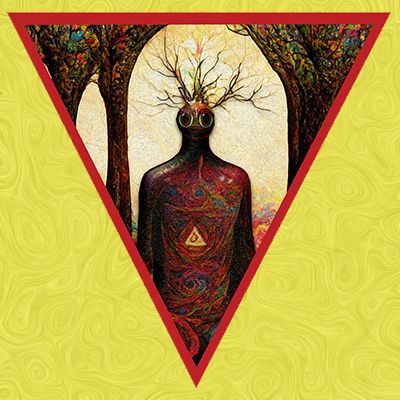
The Yakku who joined with the Bowvow would form dark faces on the trunk. These were initially articulated clearly, but after a few decades, their speech became garbled, and their messages increasingly incoherent. Given that communities had formed around the Ring Lakes to serve these Wajah and benefit from those seeking them out, some were selected to serve as ‘interpreters.’ This is one of many developments leading to the gradual decline of Yakku culture into credulity. The more ancient the Wajah, the more esteemed their rumbling utterances. They now have many honorific titles, such as ‘Those Who Sway With all Eleven Winds.’ The more ancient the Wajah, the more unintelligible their pronouncements. This led to the transformation of the original interpreters into a priesthood controlling a growing mystical culture. The general population embraced this development and began pilgrimages to the Ring Lakes. Gradually, it became the custom for individuals, groups, and official delegations to cue before their preferred Wajah to seek advice on all issues. This, in turn, led to mystical beliefs of the Wajah possessing supernatural powers, allowing them to see into the future.
These sad developments, attended by others suggesting a rapid decline in a well-educated culture informed by the standards of the original Viracocha District Flora Ministry, were viewed with increasing alarm by the Moval leadership and literary figures, artists, academics and researchers. They joined forces to produce a chorus of critiques of these developments. Academics, historians and librarians offered extensive research into the contradictions between statements made by the Wajah not in accordance with established historical fact. One humorous volume extensively details how, over time, the Wajah had often contradicted each other and themselves. Other scholarly works made clear how tenuous was the notion of the creation of the Wajah and revealed the strange history of this innovation. More famous and popular contributions to this discussion were found in a growing body of satires, particularly in theatrical productions and song lyrics, lampooning the many absurdities of this situation.
As may be expected, while these eloquent messages influenced those not fully committed, particularly among the young and educated, to the faithful, these challenges only stiffened their blind adherence to the Wajah. This also further defined growing divides in the population along several cultural and demographic fault lines. The urban centres of the Crown Rises became the source of most of the critiques. In contrast, the hinterlands, disparagingly called the ‘backforest,’ increasingly turned away from their respectful attitudes toward their elites. Within these ‘thickets,’ there was a descent into mysticism, best typified by the image above, an example of what would come to be known as ‘backwoods art.’ The original narrative of Yakku emergence, defeating the Suvuka, and the already considerable legacy of previous generations appeared to no longer provide sufficient cohesiveness to the Yakku Collective. Their association with the Koru unintentionally intensified all of this.
Contention over Yelda
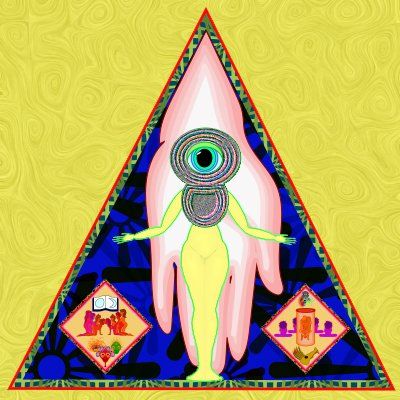
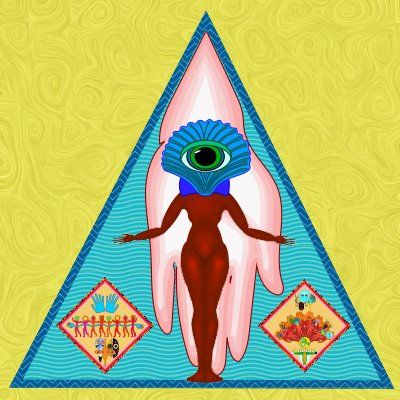
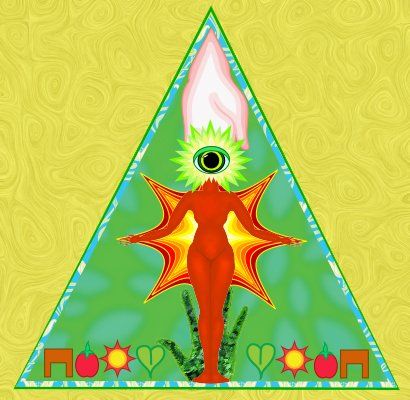
The three icons above are apt symbols for this dispute between the Yakku and Koru concerning their shared offspring, the Yelda. They represent the Sumudin, Kudurapala, and what was initially referred to as the Field Yelda. Begun during The Happy Century and continuing through the remaining six hundred years of The Interim and, to a lesser extent, during the first two centuries of the Secondary Epoch, the joyous issue of Koru and Yakku love spread through both nations. The Yelda proved adept in fitting into the mountain caverns and forest canopy. As their generations progressed, they displayed modest versions of The Change. What came to be called the Yakku Yelda ‘grew their ears’ to a limited extent and even saw their toes slightly lengthen. The Koru Yelda grew stocky, with their eyes widening for night vision. Neither Yakku Yelda nor Koru Yelda displayed these alterations to nearly the same degree as their parents. In both cases, they remained of similar height and, in other ways, distinguished themselves as a distinct and autonomous hybrid. Gradually, these differences were cultivated and augmented by each parent society in ways accentuating their living in different social environments. While the Yakku formed them to integrate into their arboreal society, the Koru went further.
Yeldic Colloquium
The Yelda’s exceptional malleability allowed the prodigious generations of Koru Operants to locate the Yeldic presence within the Living System. As early as the second century of their separate existence, Operants could distinguish between Yakku Yelda and Koru Yelda within Tatchlan. The Central Triumvirate established the ‘Yeldic Colloquium’ to engage the great minds of their generation. Within the elder chambers of Mount Chraxan, they examined all aspects of these new beings to determine their destiny.
Almost immediately, the deepest Operants discerned profound depths within the Yelda. Early in their deliberations, the Colloquium took the inspired step of instructing their Invocates and Operants to place the complete examination of the Koru Yelda within Tatchlan as their second priority after revitalizing the Twelve Principal Faces and their Secondary Faces. As a result of this intensive scrutiny, by the fourth century of The Interim, a determination was made that the Yelda represented a profound benefit to the future of the Living System.

Represented here is what is known as the Colloquium Completion Icon. At the bottom, from left to right, are the icons for the Sumudin, Field Yelda and Kudurapala; midway up is the terrible image of the crucible of Tich-Tushmul, which will be fully explored in the third novel of this series, Dalinantu Emergence. At the top is the Koru icon for the Danam Yelda, seen as the culmination of the original Colloquium’s efforts. As such, its formation came long after the events of this narrative.
From this point forward, the most powerful of the Koru Operants began separating and perfecting subsequent generations of Koru Yelda into distinct classes. Two of these classes, the Sumudin and Kudurapala, would grow into specialties serving the ever-increasing Koru nation within their original mountain chambers and, later, in the Secondary Epoch, their Living Mountains. The third class was eventually termed the Field Yelda. Initially, their public status was as agriculturalists and pastoralists. While they began to ply their craft within sheltered valleys in the Mulungu Mountains, eventually, they were to be settled out on the Marachla Plain. It must be appreciated that these plans were laid when there was no possibility of their realization due to the Suvuka still possessing the Skin of Anu. As such, these Yelda symbolized a hopeful future for the Koru. Much of the Colloquium’s work was publicized in what came to be known as the ‘Yeldic Bulletins.’ These were widely distributed and eagerly anticipated by the emerging Koru society. They were later bound into multiple volumes. Due to their surprisingly cerebral and elegant prose, extensive selections were later included in the first portions of the Yiz-Vayaj, celebrating the noble origins of the Danam Yelda.
Yakku's response to Koru’s Yeldic Bulletins
The Koru freely shared these ‘Yeldic Bulletins’ with the Yakku across the Panchala Sea, with unpredictable results. Those Yakku who had rejected the notion of the origins of The Killing Swath in the Tolku sacrificing themselves for Tatchlan, labelling it an ‘abhorrent doctrine,’ became profoundly uneasy. To their eyes, these dispatches and reports revealed several issues of concern. One was the indication that those possessed by this power used it to change life, including the Yelda. Of equal concern was the joyful acquiescence of those openly modified. These Bulletins also made clear the trajectory of the Koru. There could be no doubt that they were on an inevitable path toward recreating the society of the Tolku. Finally, some regretfully relented in their belief that the Rectification was a lie. They saw in these documents clear evidence of the kind of profound devotion that could have led to the Tolku of the Primary Epoch making of themselves and their entire civilization an offering to ensure the rebirth of Tatchlan.
These views were not universal. Evidence from other studies of Koru society revealed their significantly better quality of life than the Yakku. Most professional associations, academic federations and proficiency leagues found that the Koru excelled over the Yakku by every measurable indicator. Only one of a great many examples of this was the radically differing need for the application of criminal law between the two societies. While the modifications of the Koru Yelda were followed with interest and sparked much discussion, those strongly objecting to the practice were initially a minority within the Crown Rises. These elites may now be judged as lacking in foresight and diligence to ensure accurate information about these matters reached the entire population. Standing in this void was the Djingal Votary. They quietly took all of these discussions and tailored them for their audience. At the same time, they disparaged the official dispatches, characterizing them as being written by ‘The White Hand.’ They successfully distributed their narrative in several ways. They publicized certain revelations and reflections while suppressing others. It was later learned that they would occasionally delay the distribution of certain new developments until they had crafted how best to further their cause. In the case of these Yeldic Bulletins, the small selections that went out were edited to maximize the fears of the backforest.
Majastas Crisis

All this came to a head with the news that the second Koru Majastas, Zudaz-Vanoy, had been wrapped in the Mantle in the year 286 UKC. This is the year our novel, Amarel Mountain, begins. The Djingal Votary judged this the moment to enact many long-laid plans to overthrow the old Crown Rise order. It started with stories swiftly carried by well-prepared cadres from The Ring Lakes claiming the Swaying Wajah had cried out in alarm at the emergence of Majastas Zudaz II (pictured here is the icon for the entire Zudaz Dynasty). It is now known they had long prepared what came to be known as the ‘Ring Lakes Declaration,’ exhorting all Regional Trees to break ties with the Koru Cluster-of-Clusters Nation and to excise all trace of Koru influence from the Yakku Collective.
What happened next varied in numerous ways, ranging from arrests, show trials and book burnings to little or no change. These variations spoke to the Votary’s varying degrees of success before this turning point. In the case of Bithen Regional Tree, where Foremost Moval Jovikel and his family lived, there was more and less disruption. Due to this region’s long history of supporting solid ties with the Koru and being a haven for scholarly and artistic critics of the Siv-Sa religion, a great deal of governmental, institutional and cultural infrastructure was destroyed. At the same time, a significant portion of the population, particularly from the capital, Gye Sonin, surreptitiously began leaving during the period of the initial Ring Lakes Declaration up to the burning of the treed avenues leading to the Koru clusters in the neighbouring Viracocha Mountains. With this dramatic culmination of events, readers will leave the Yakku Collective for several subsequent novels.
Interview about Amarel Mountain Sunday, March 31, 2024.

